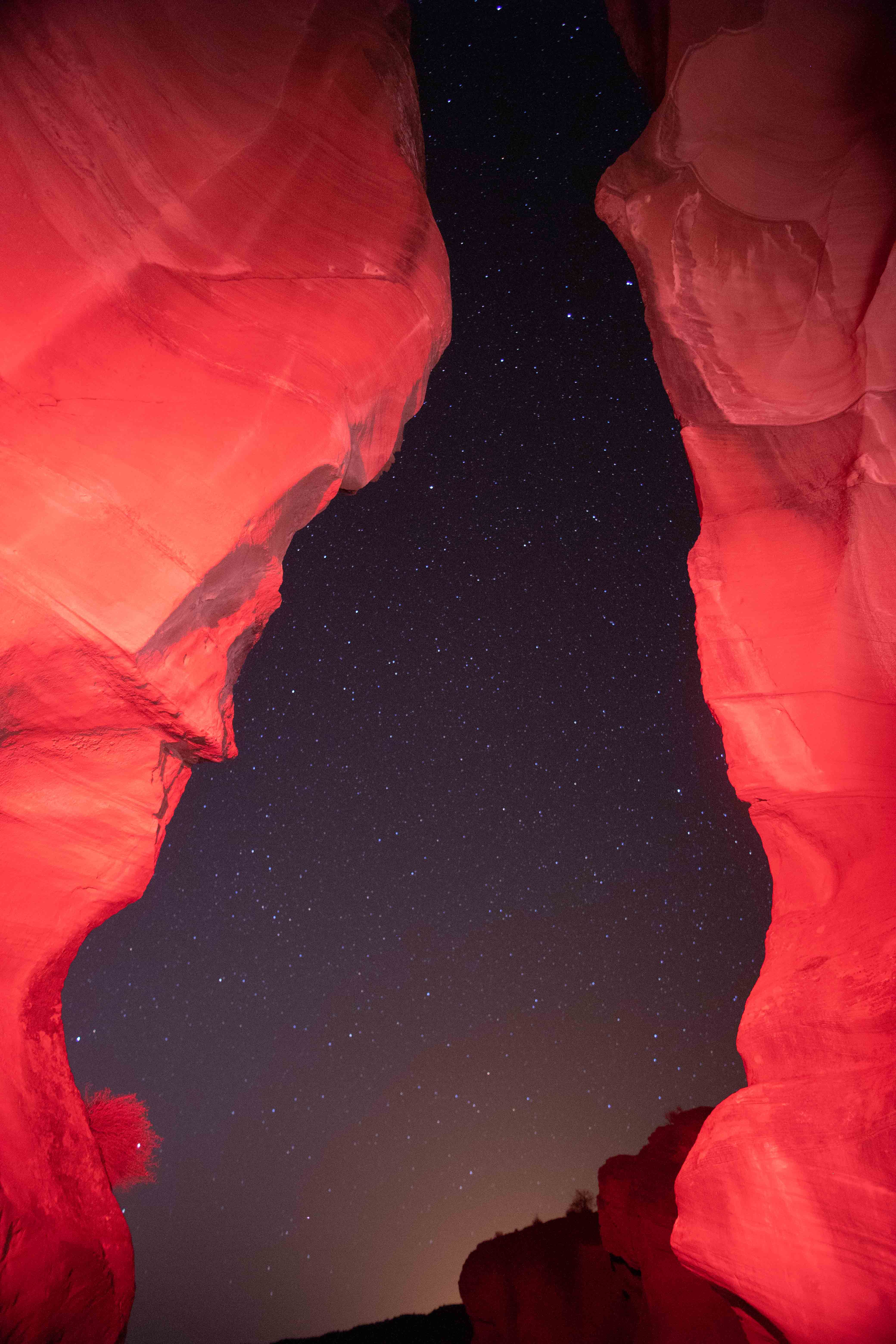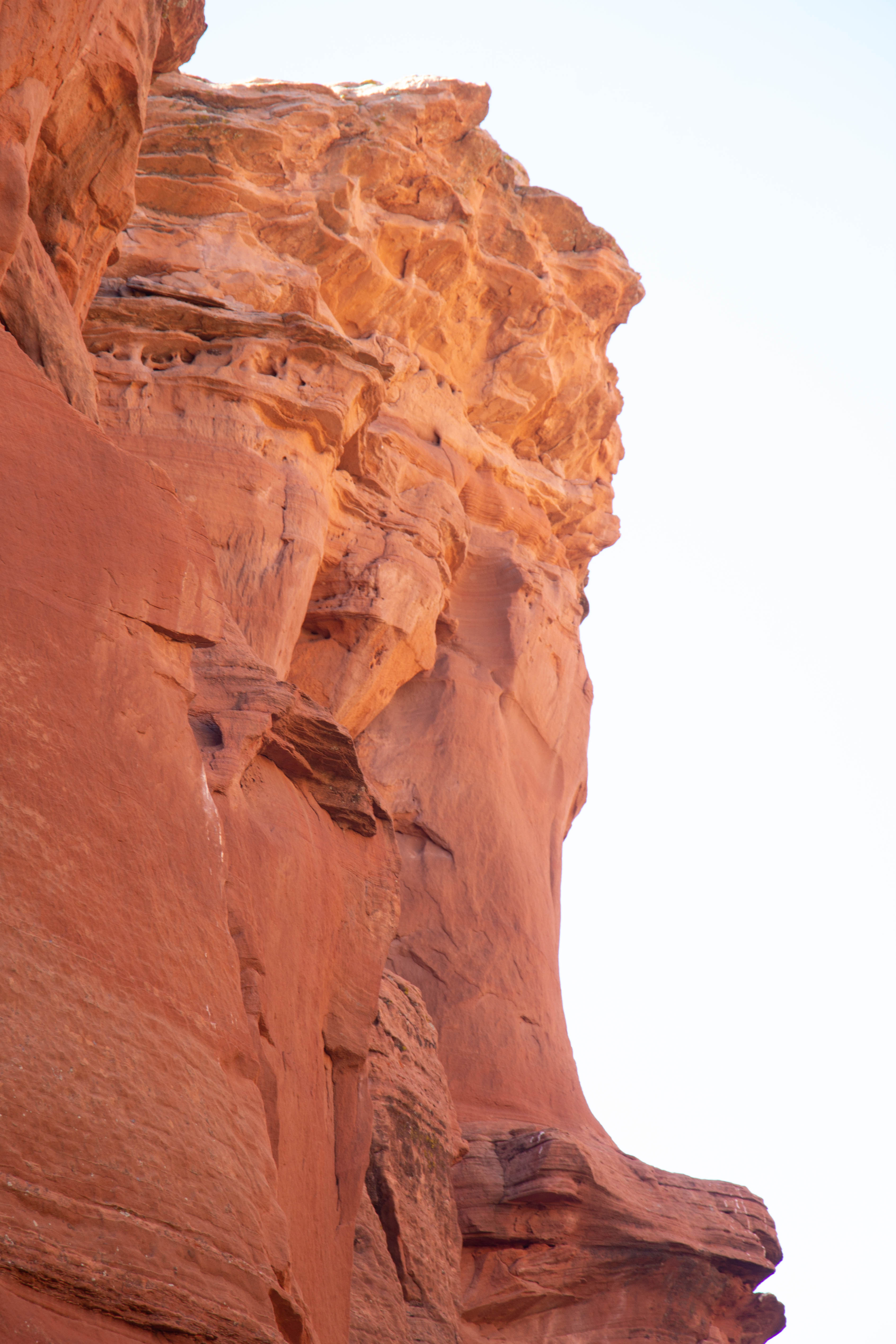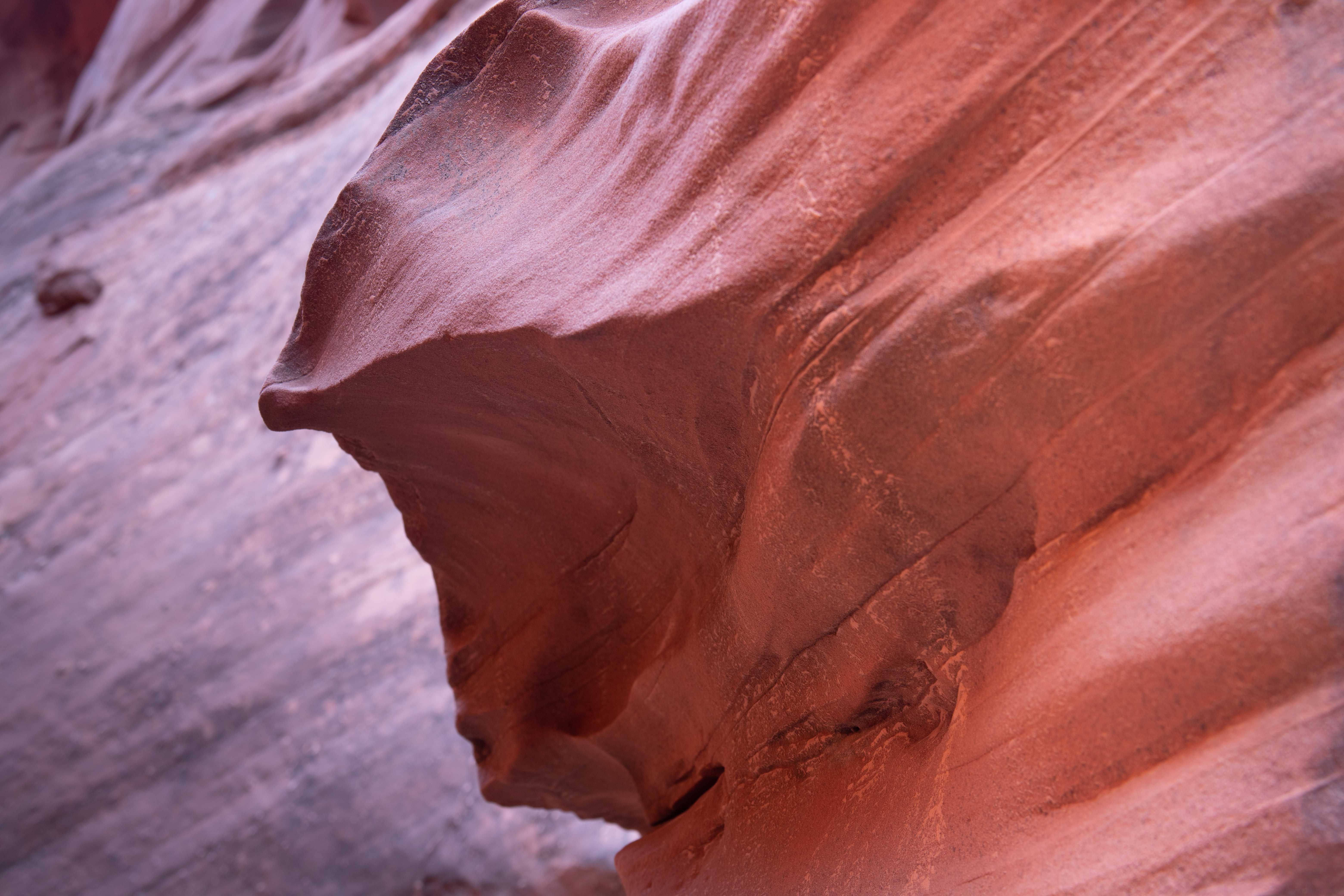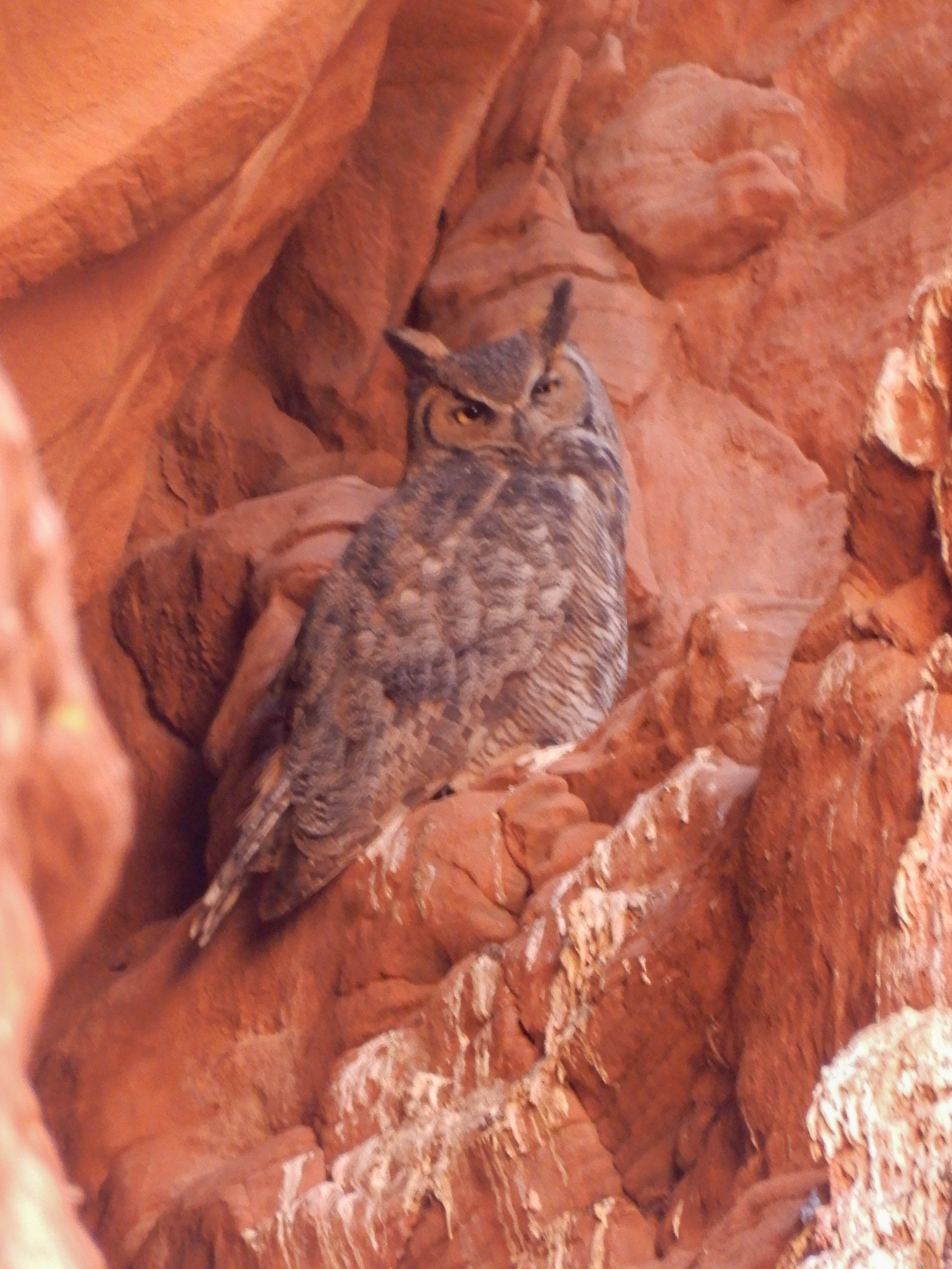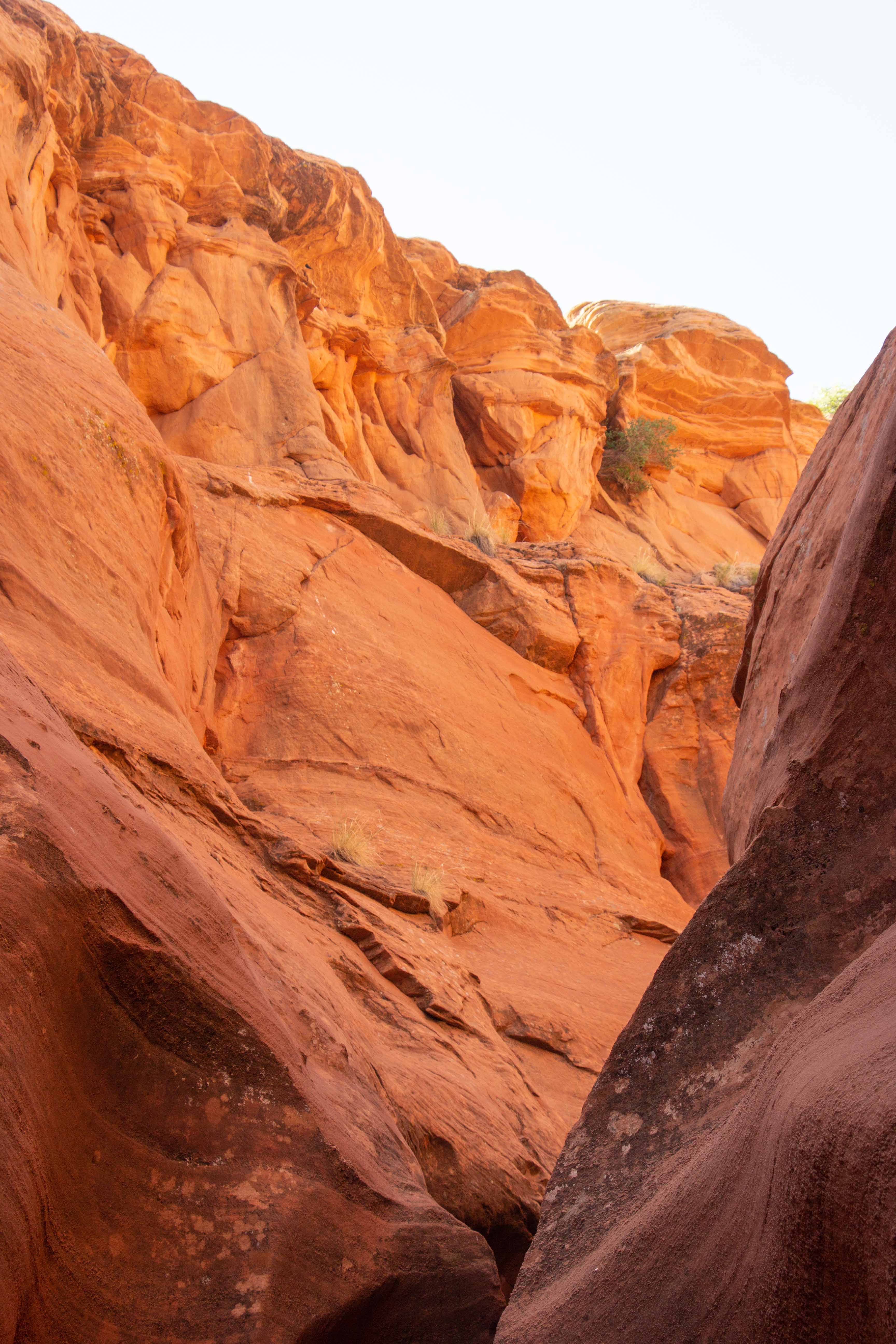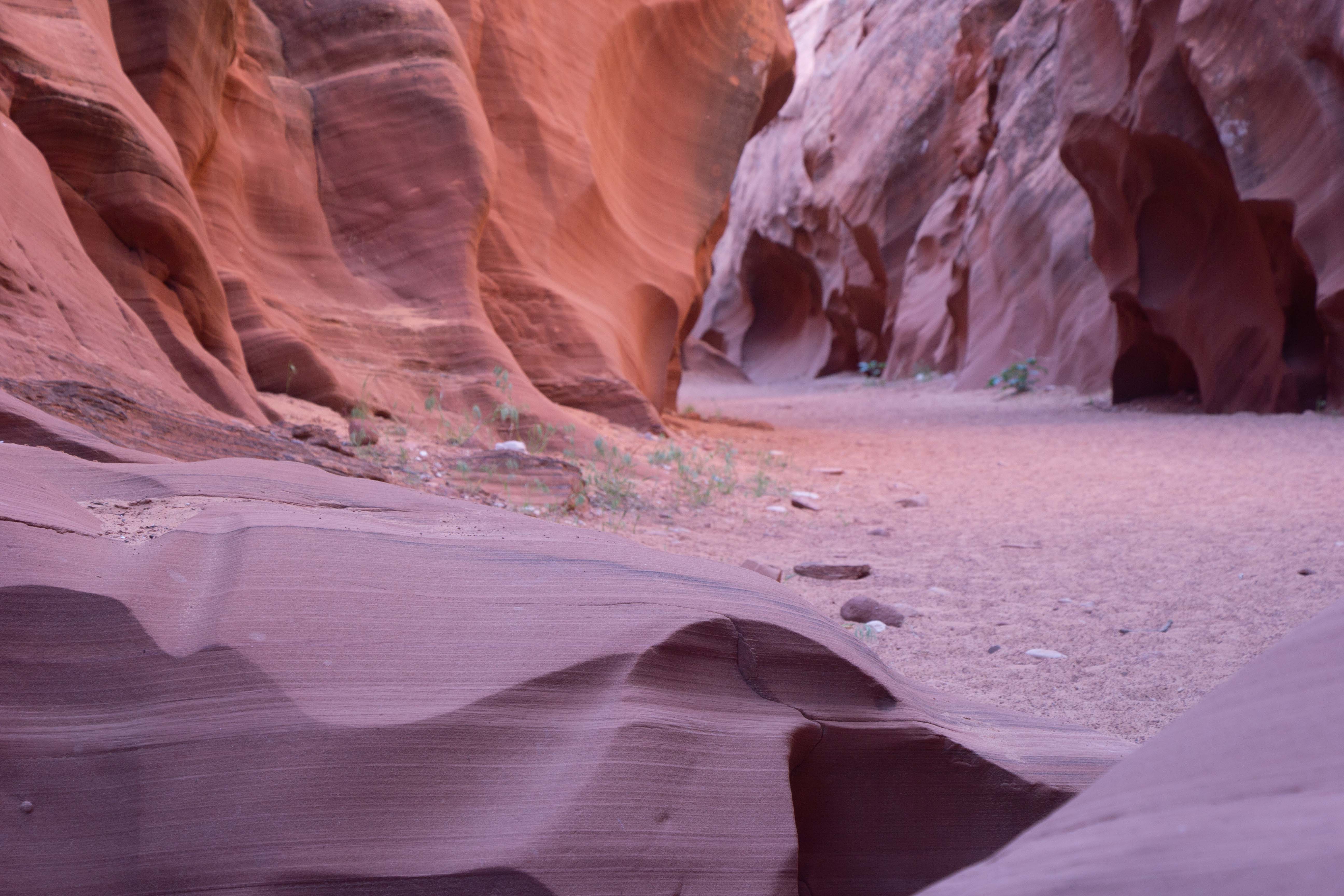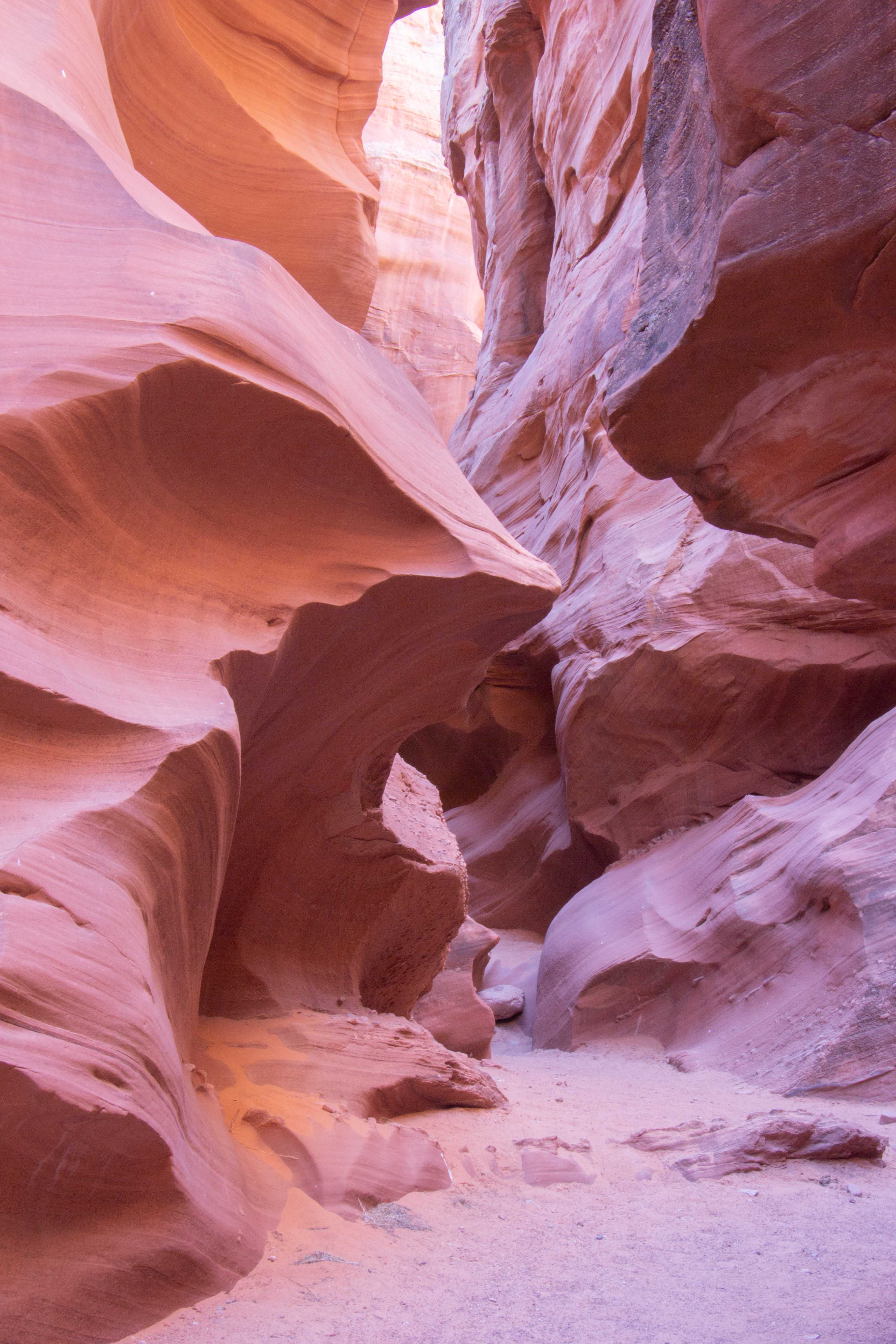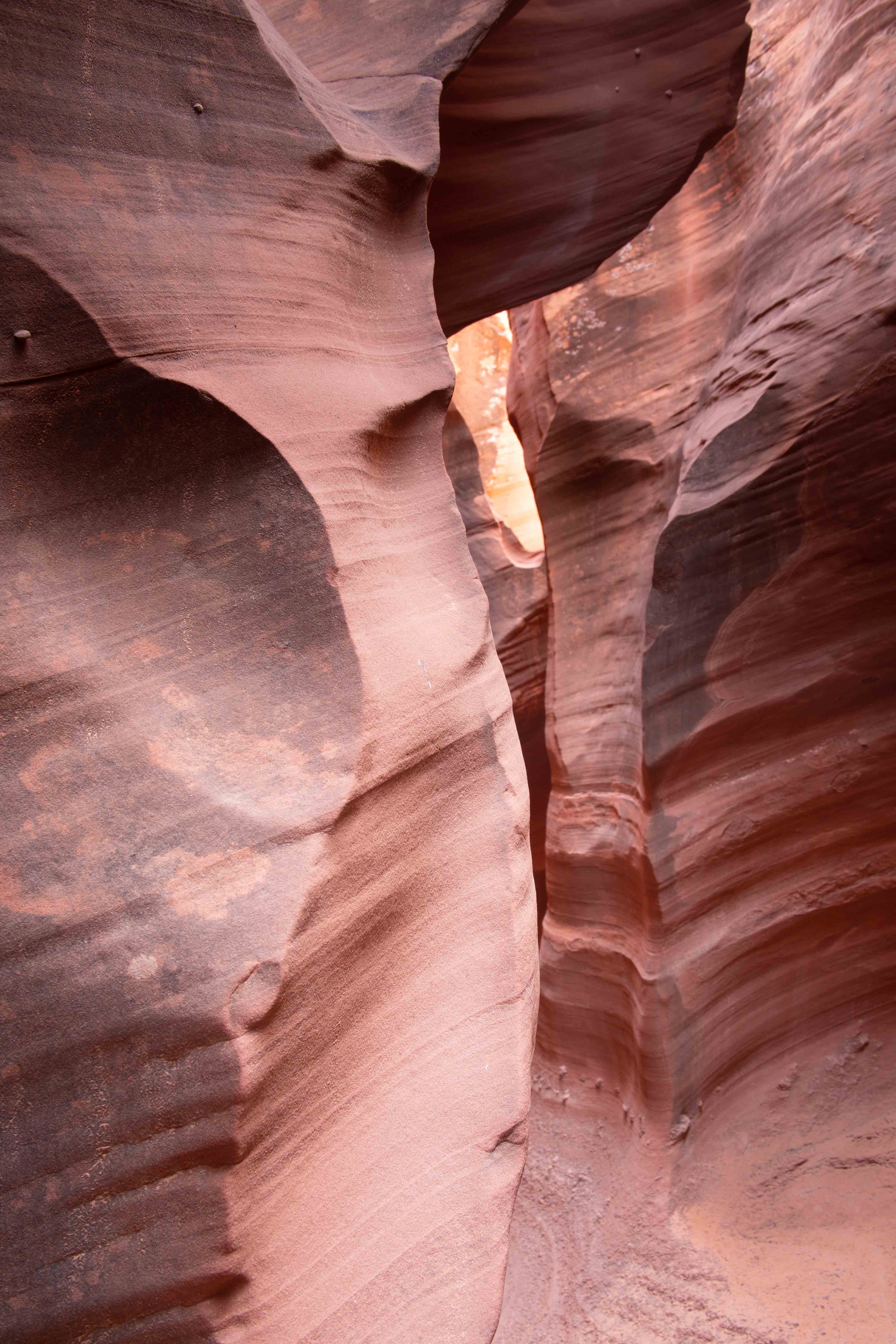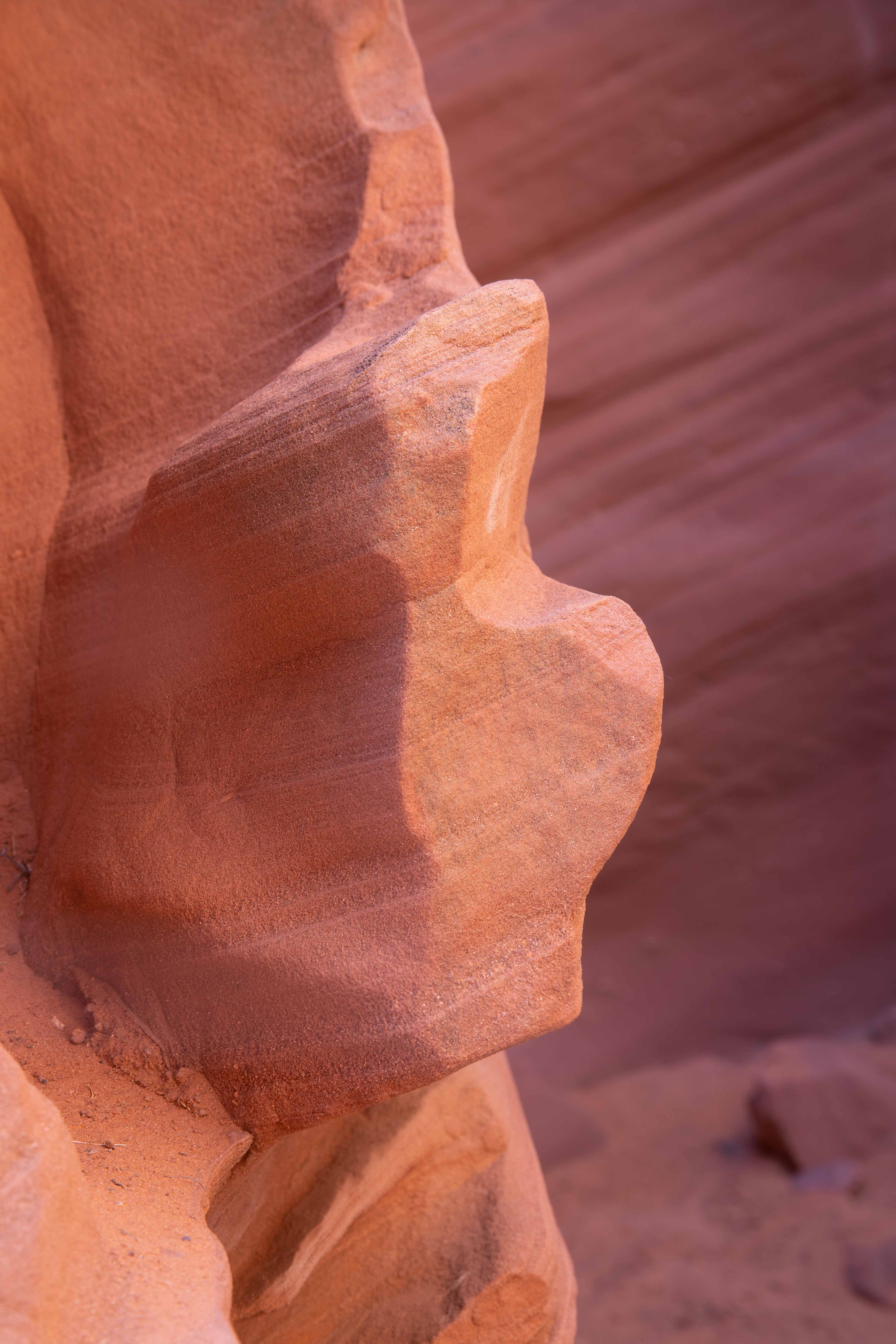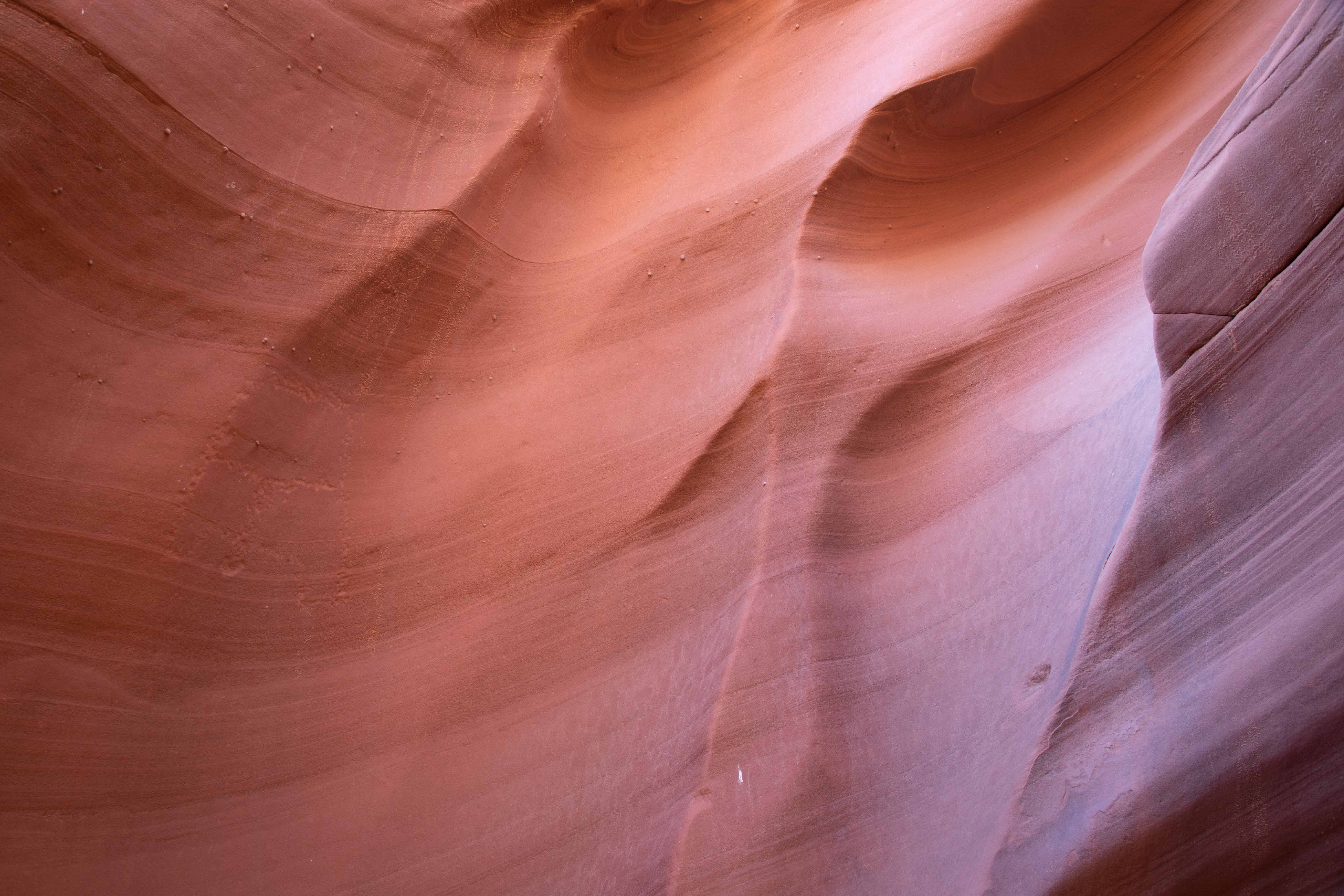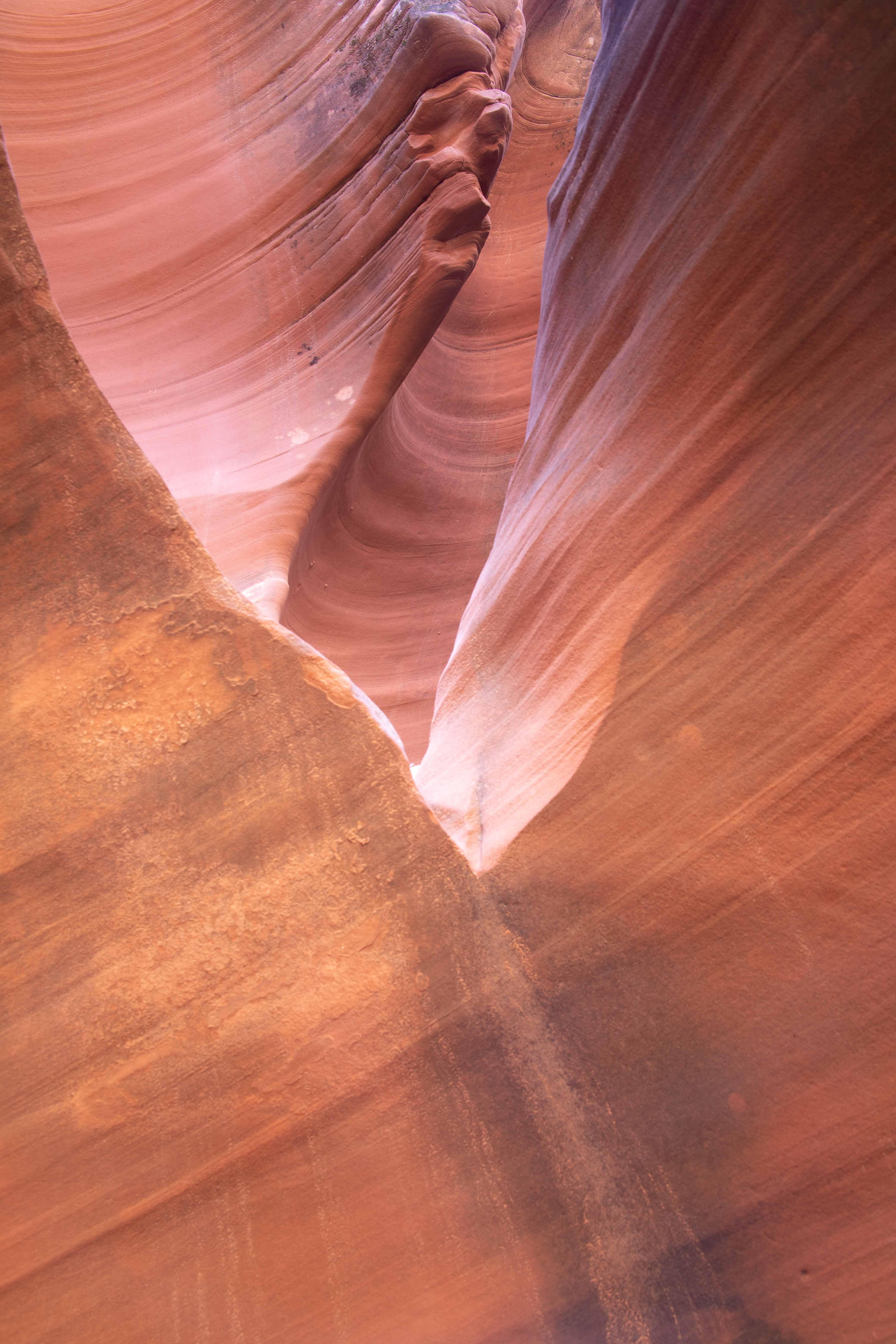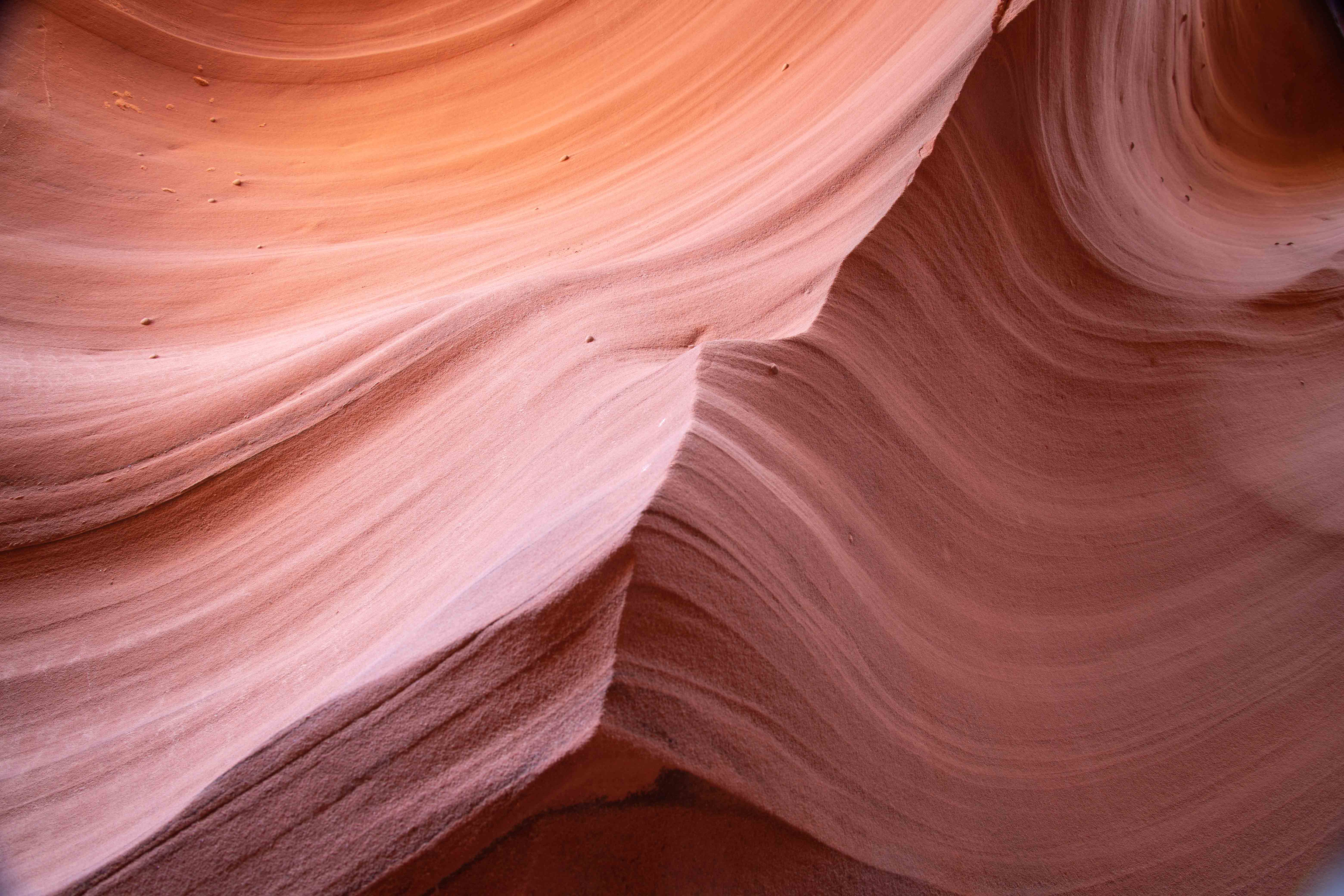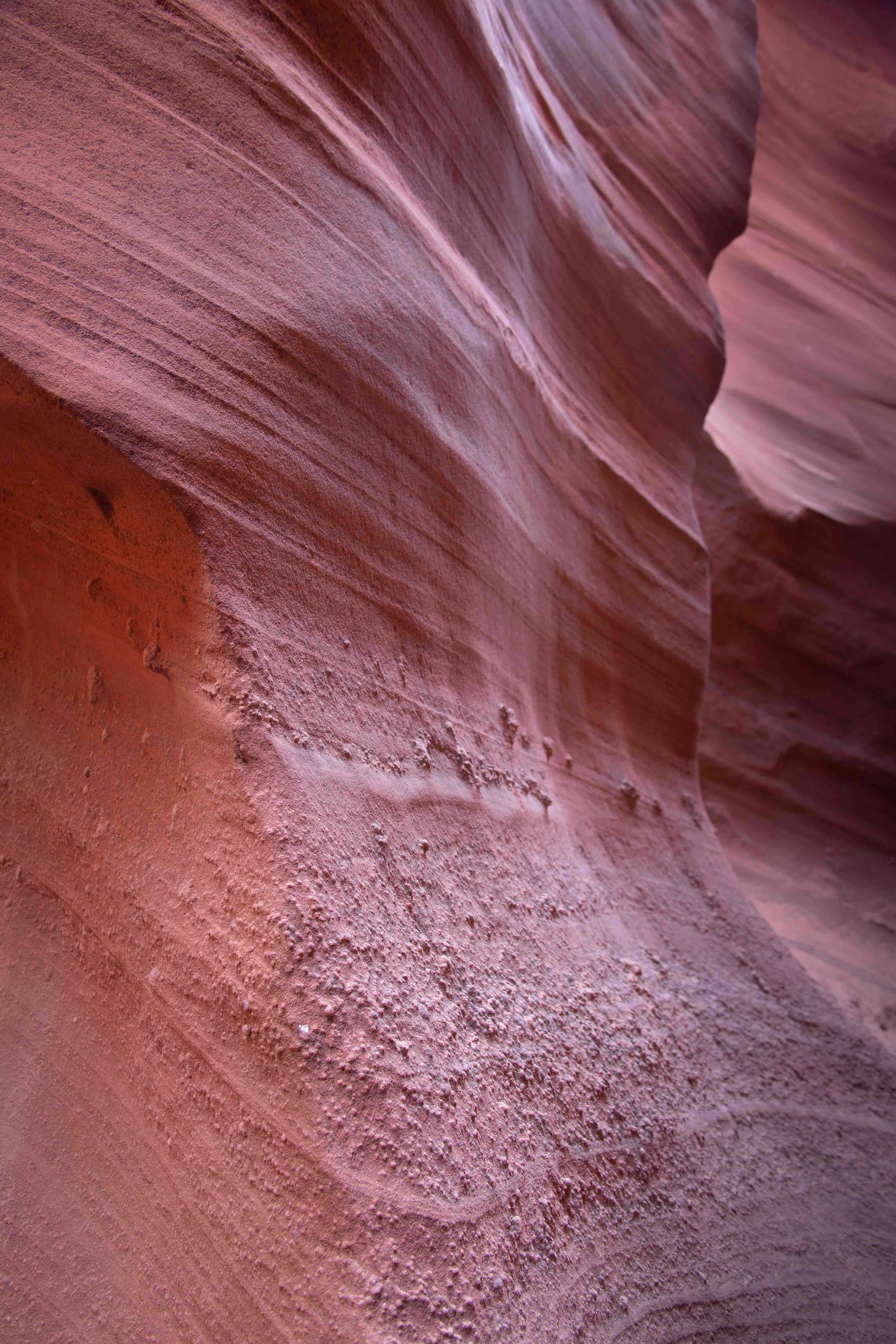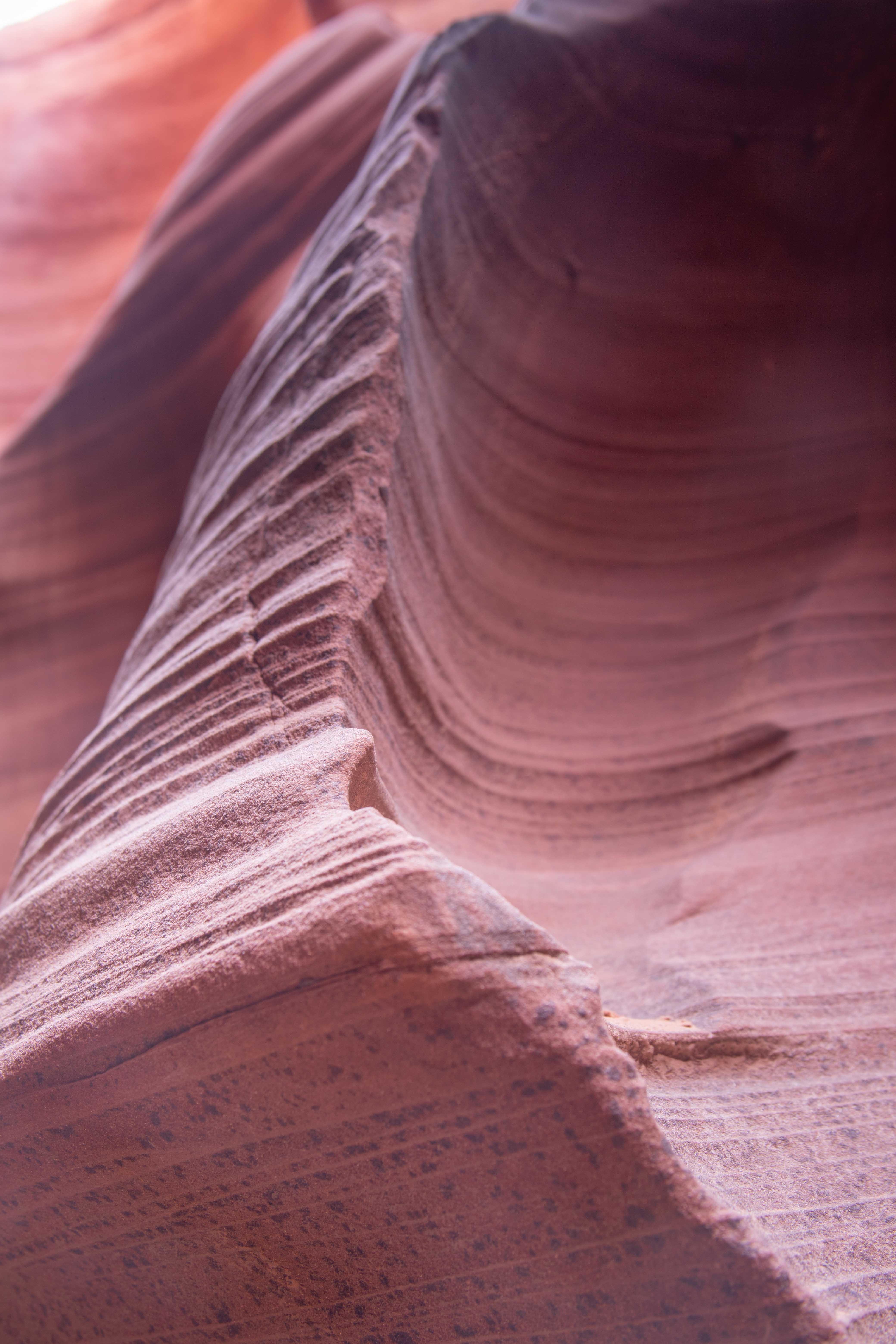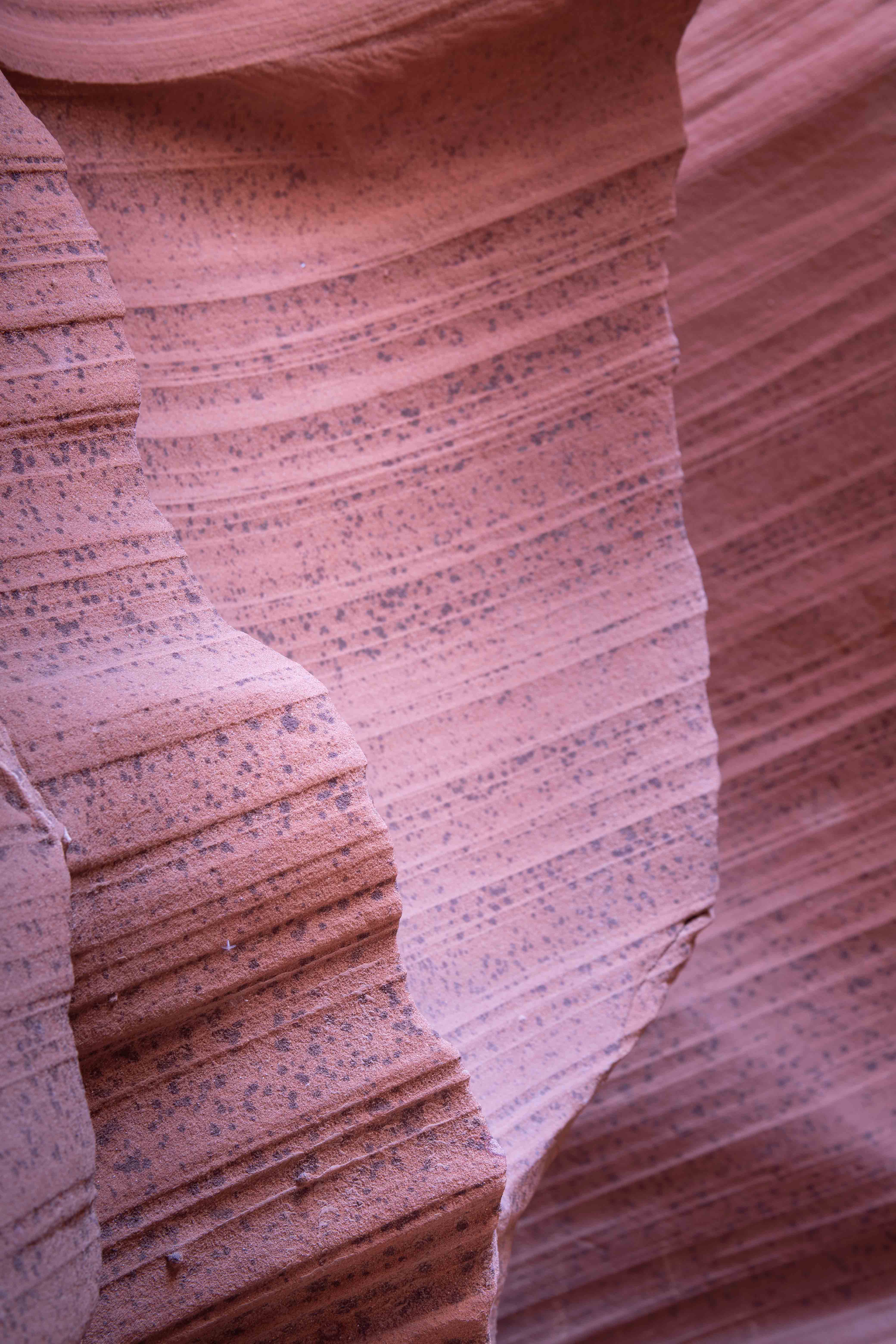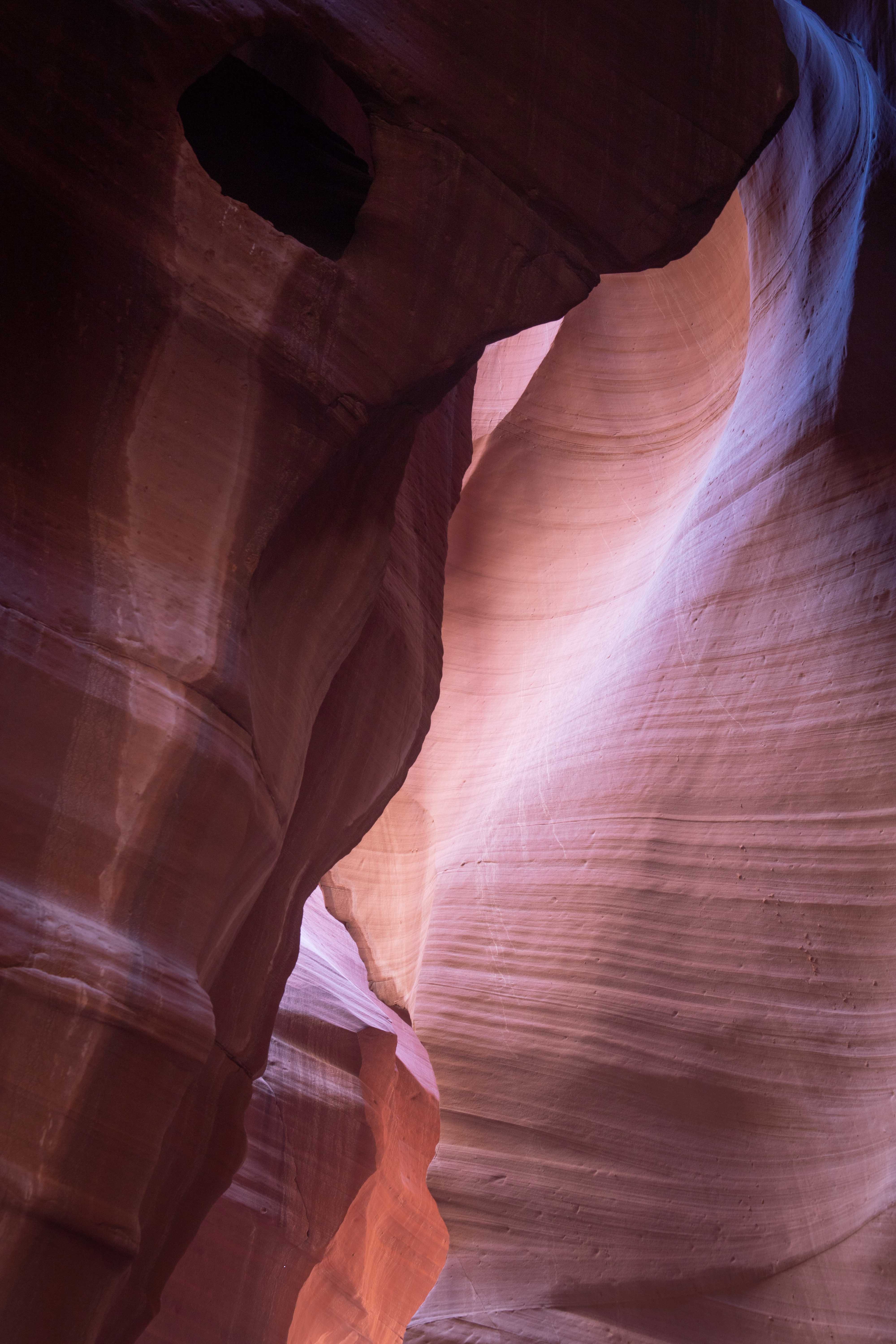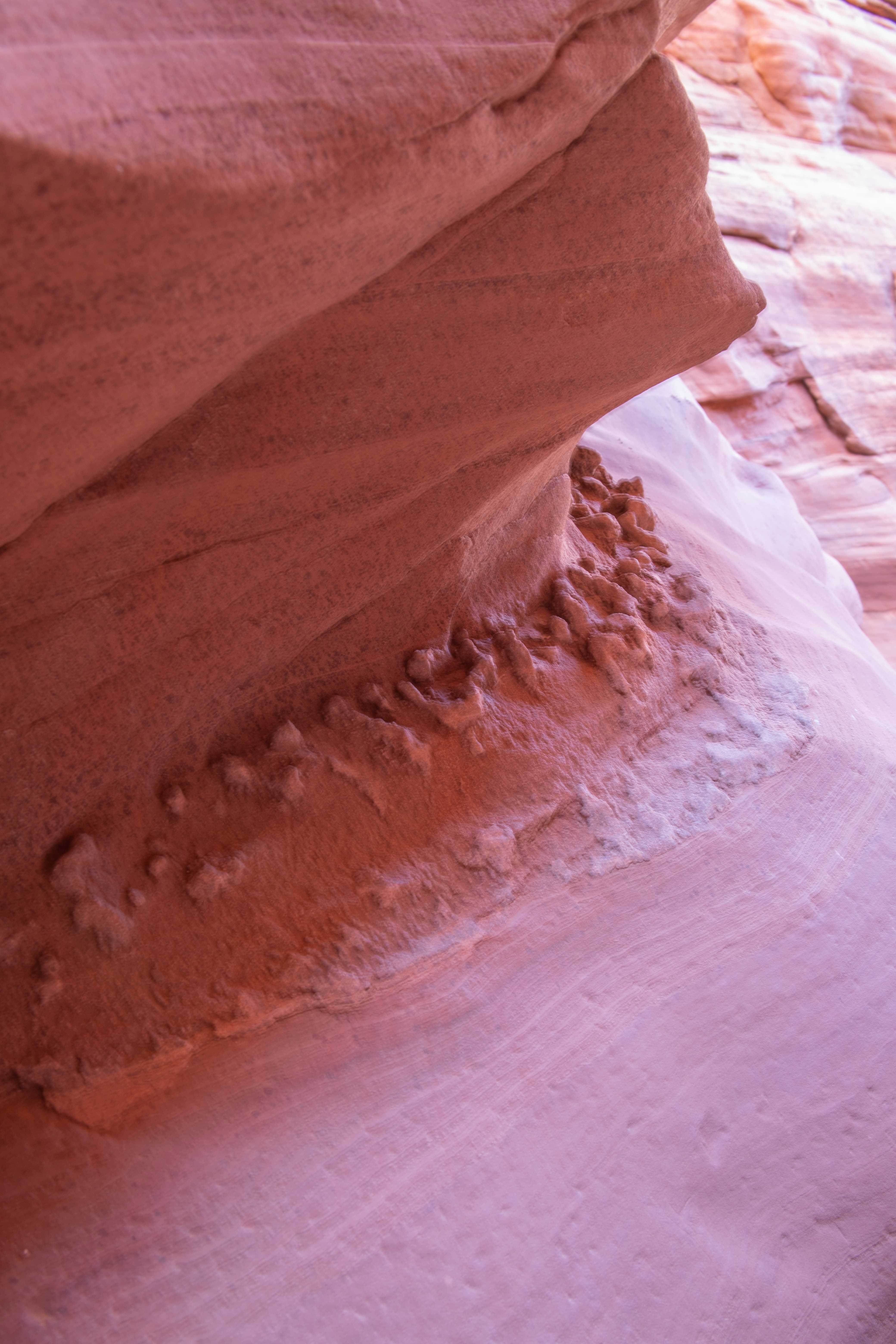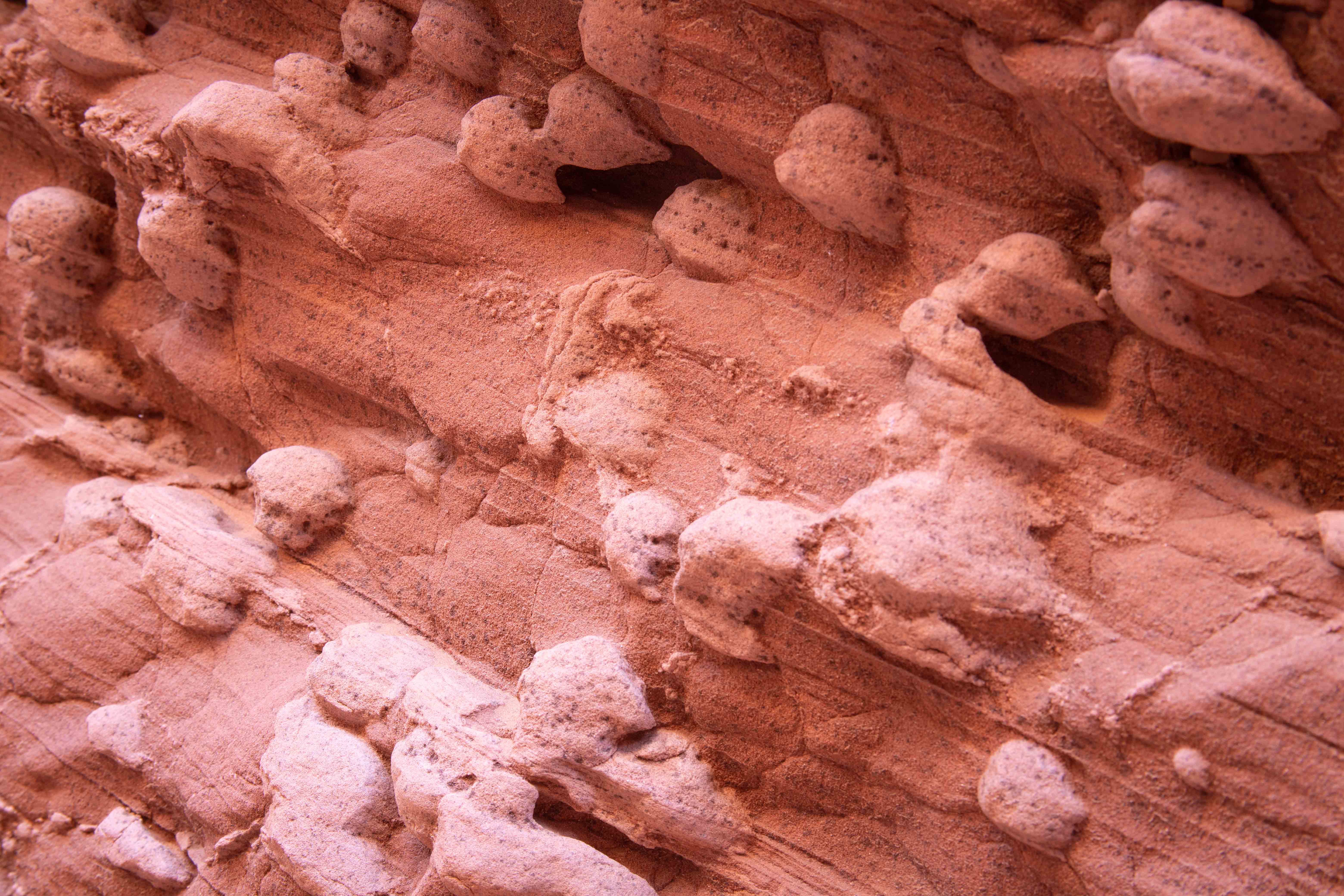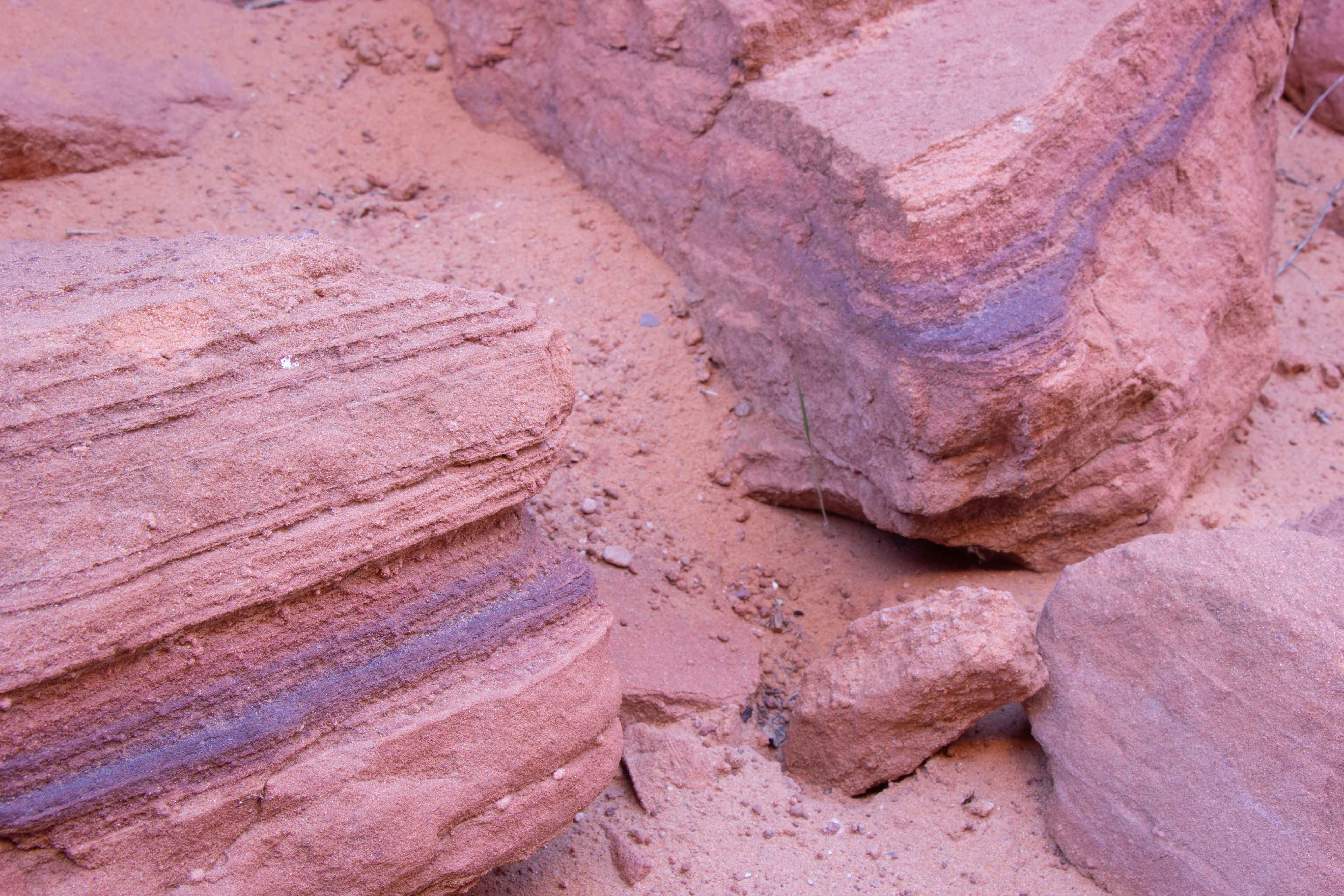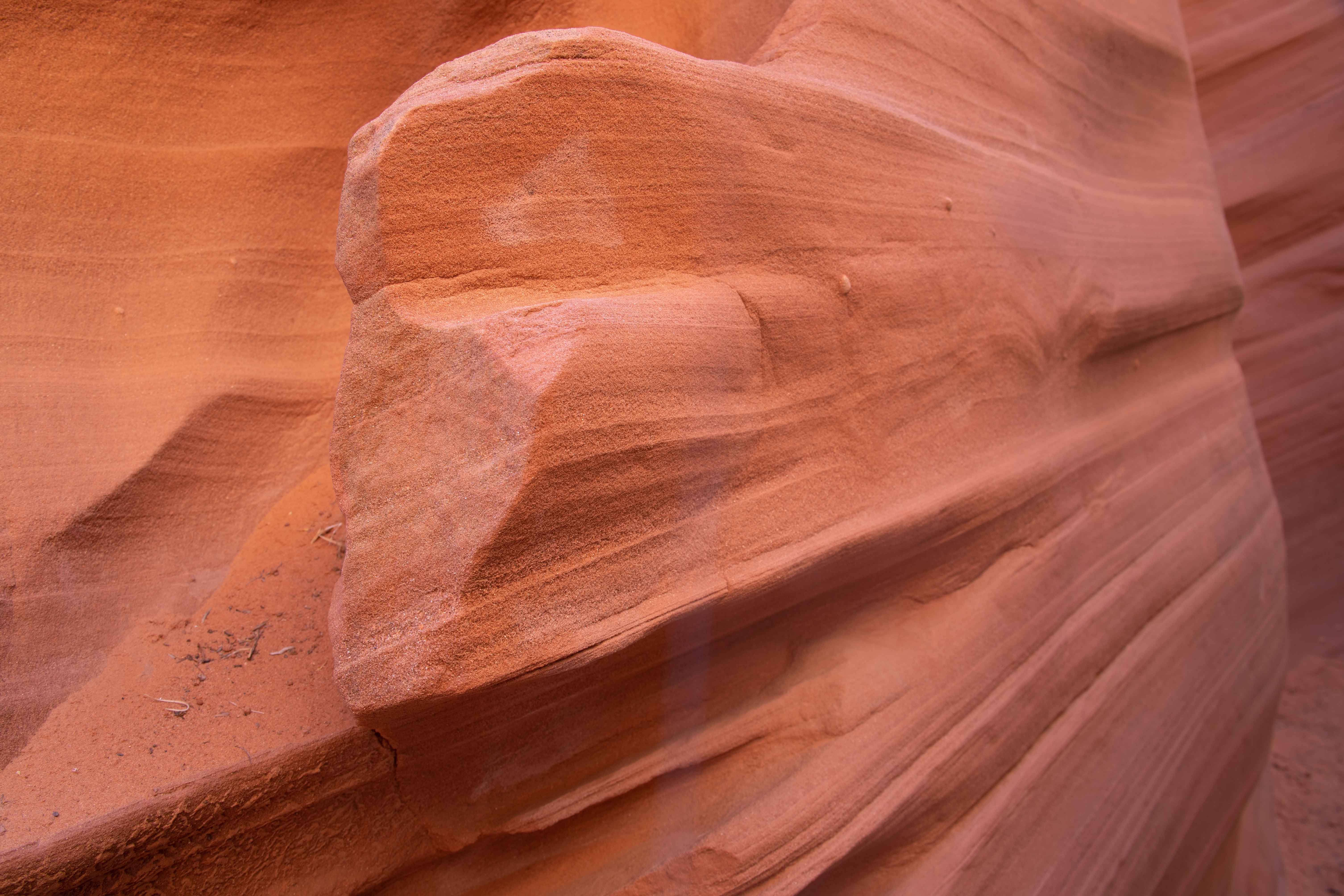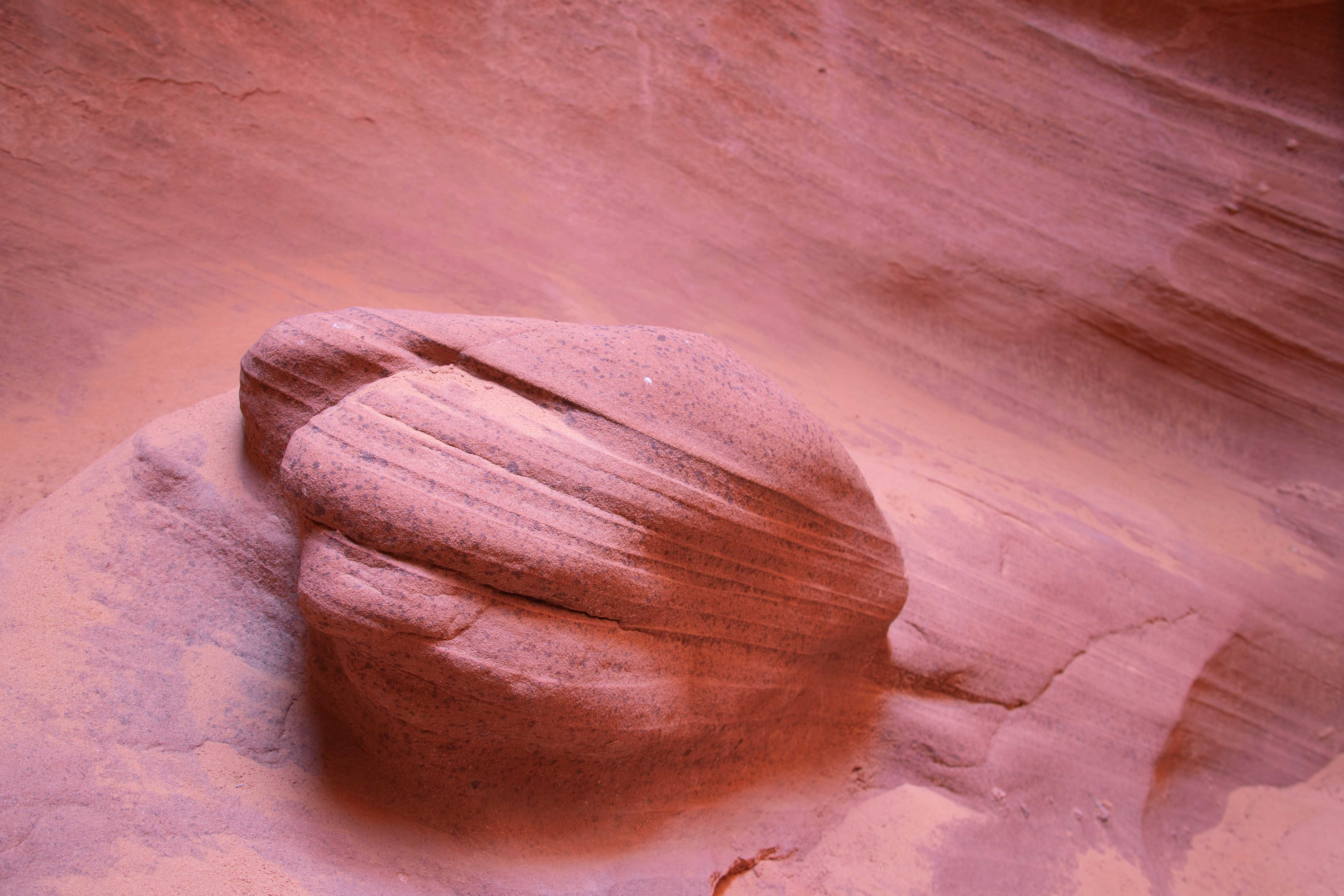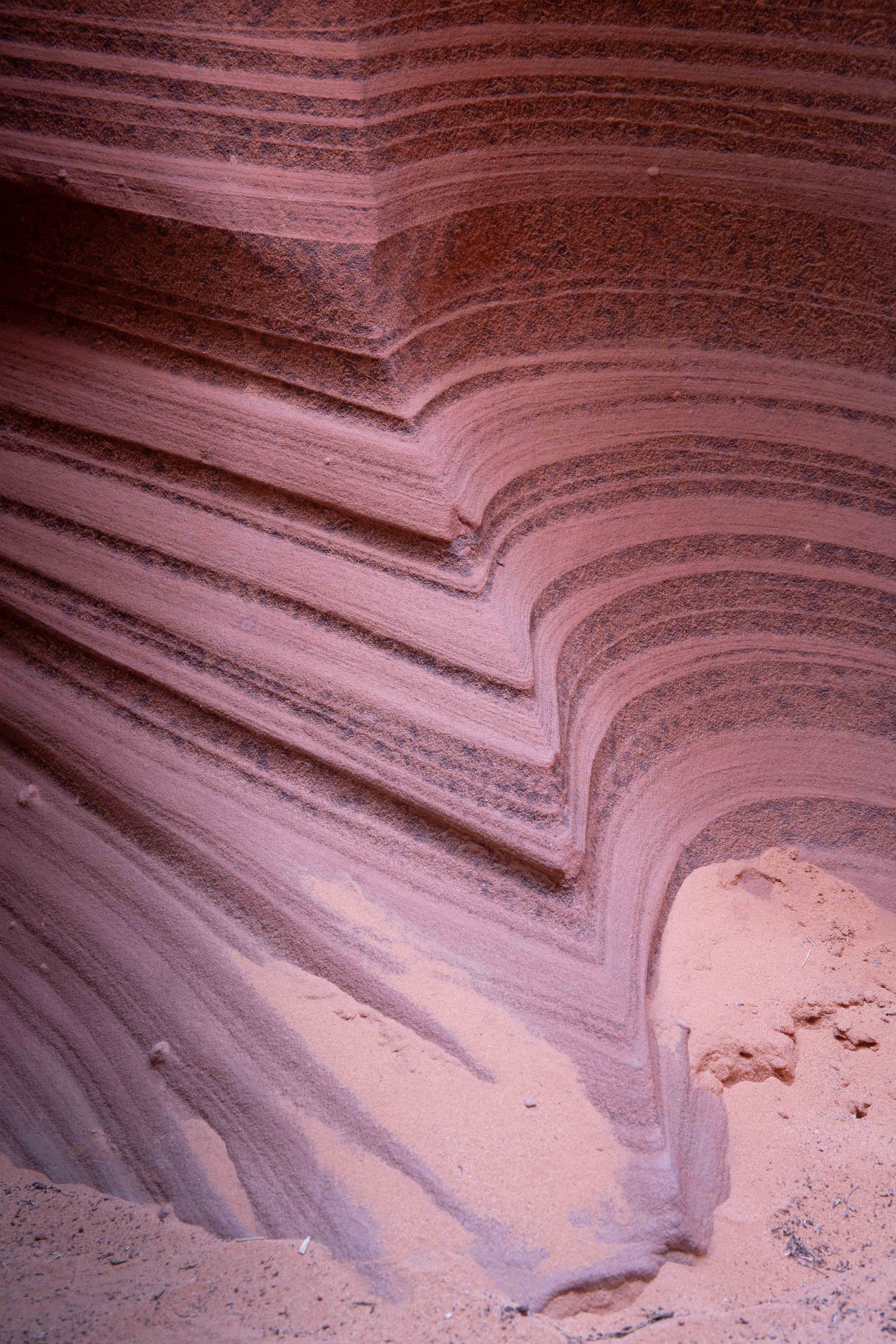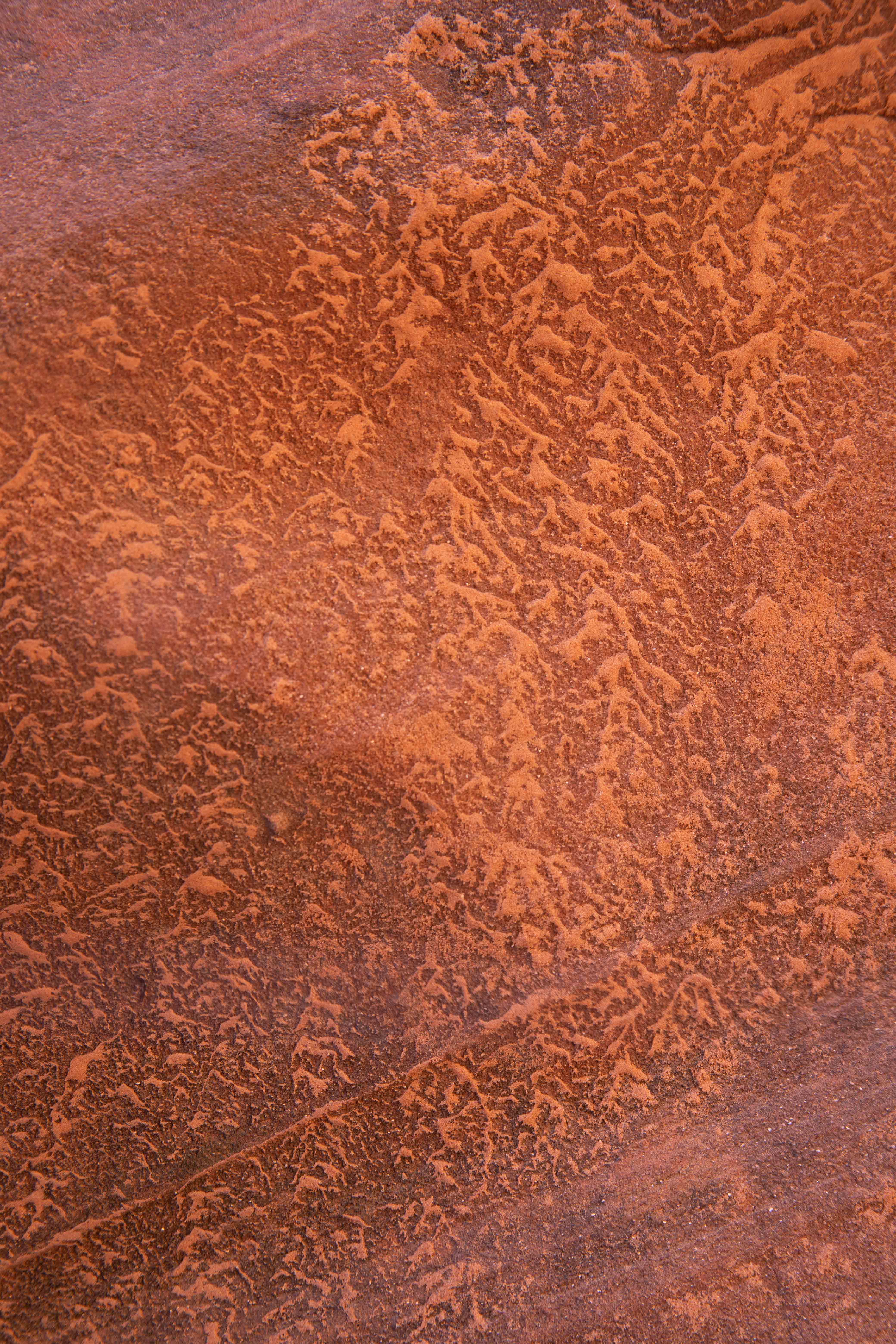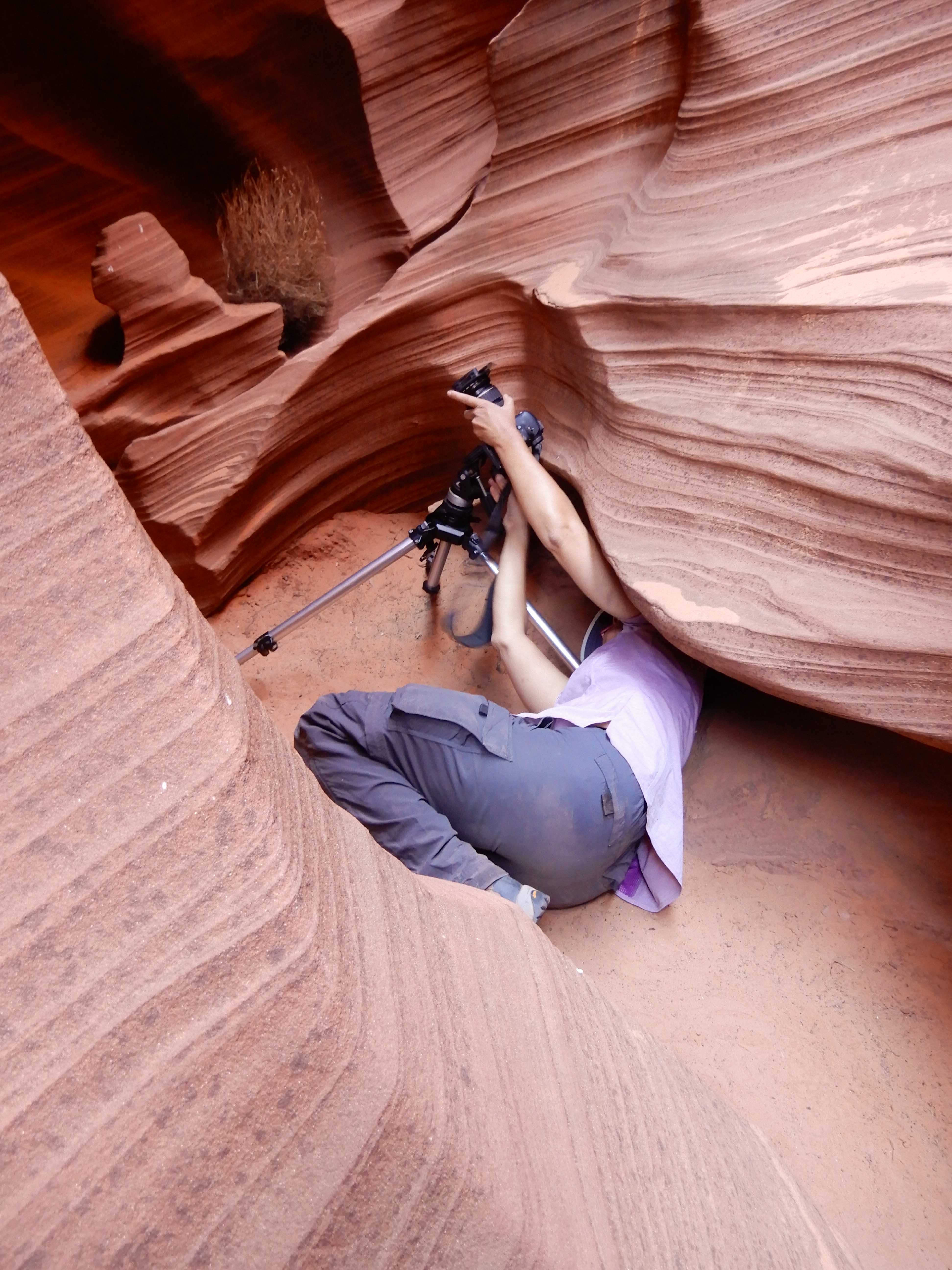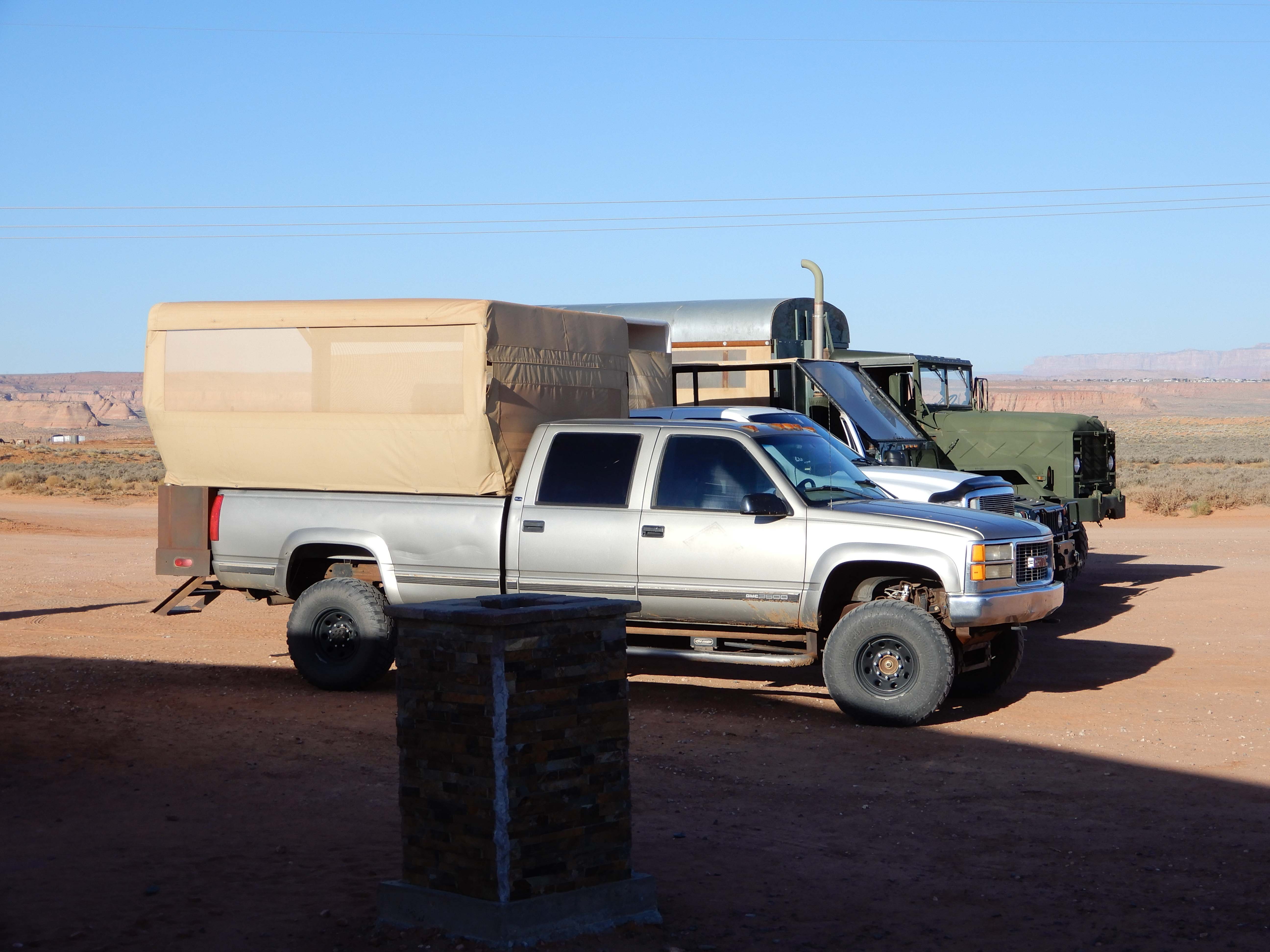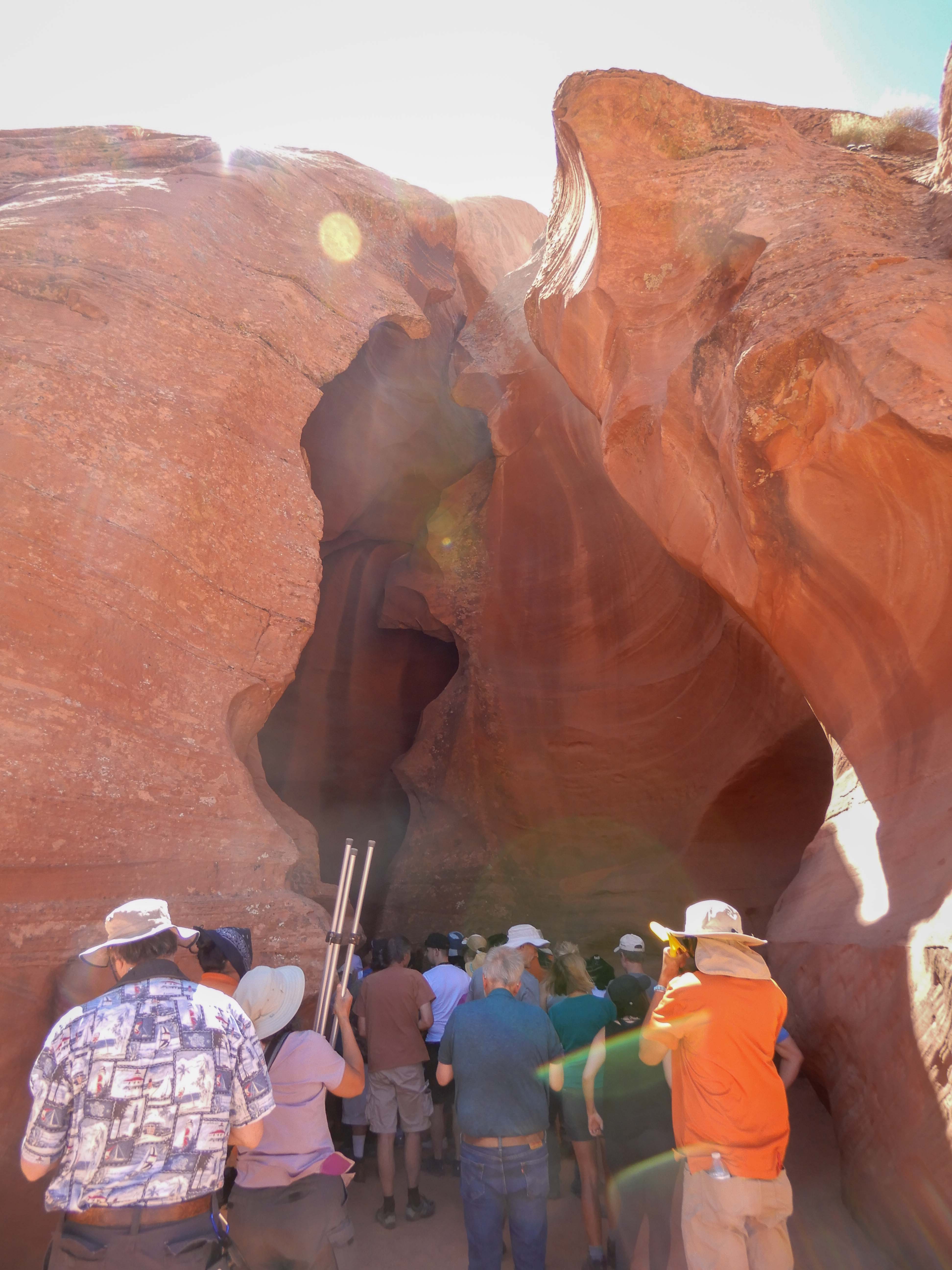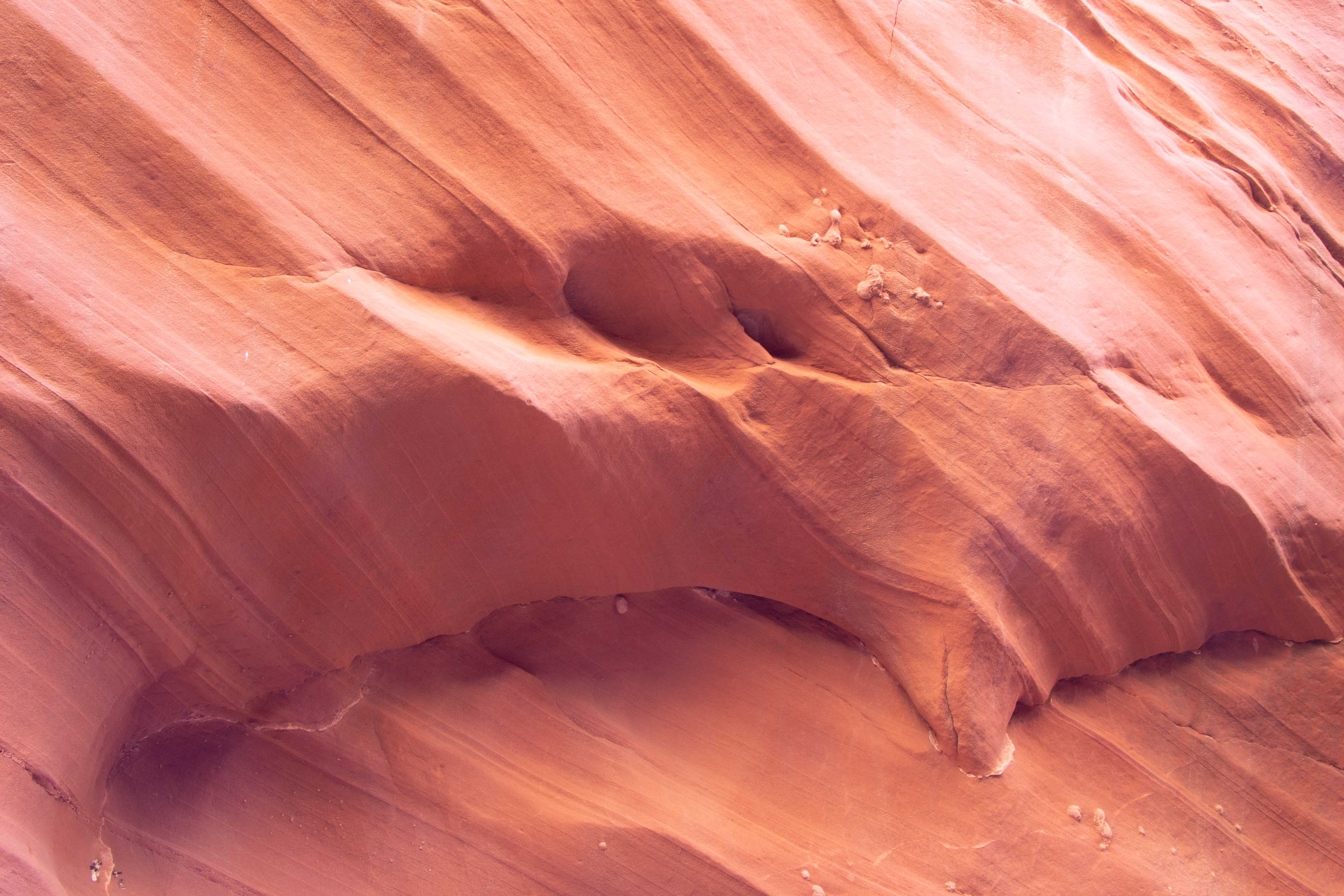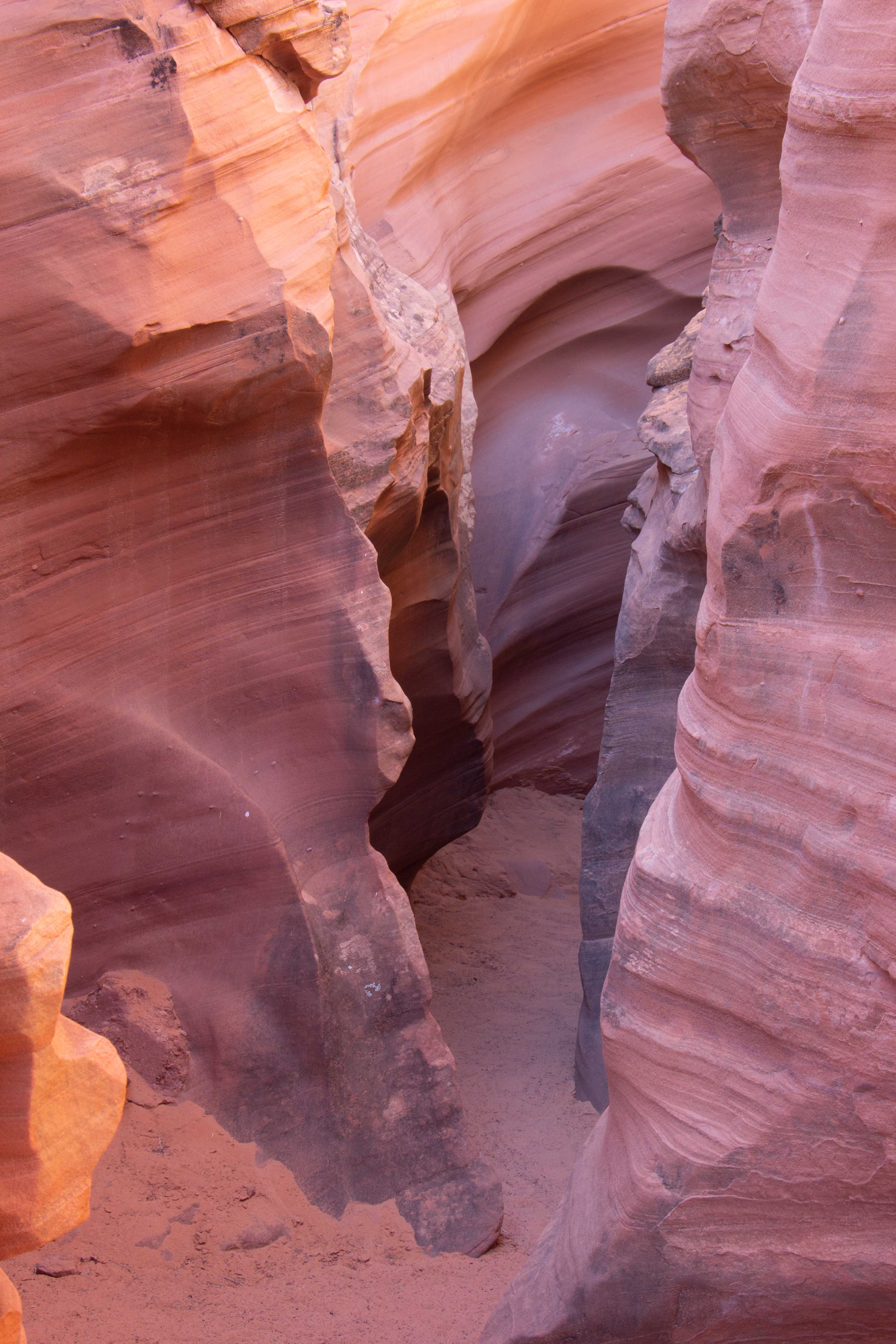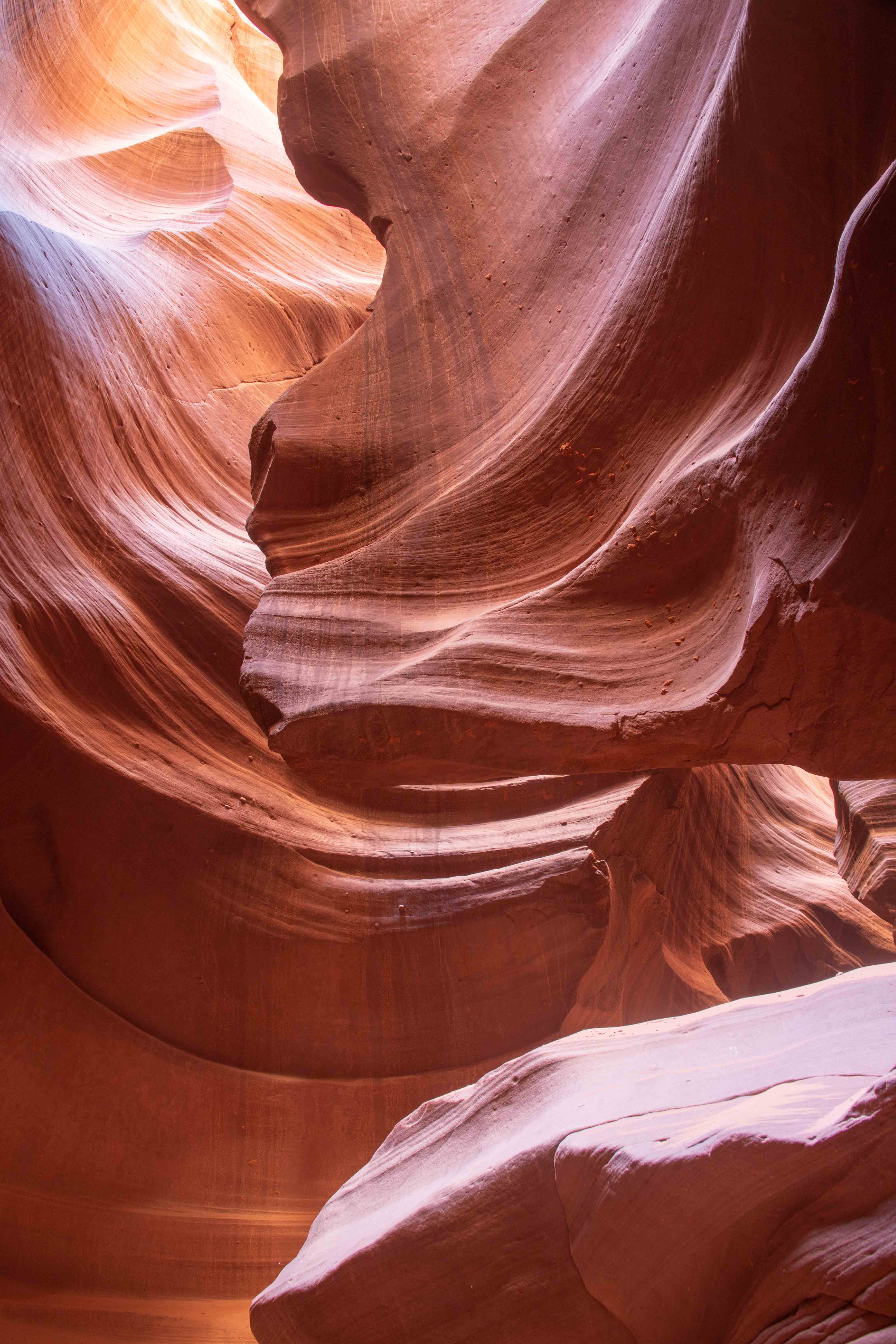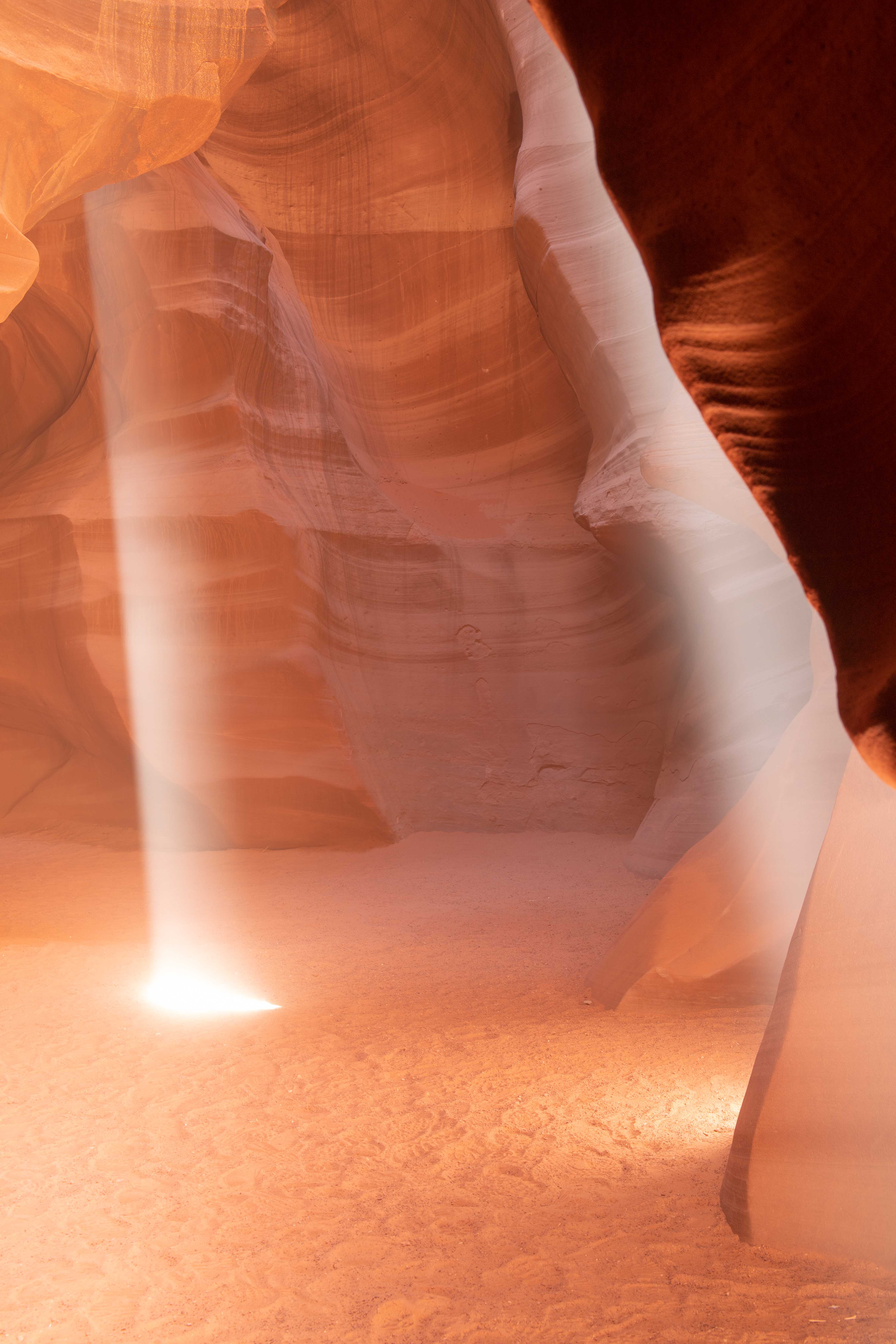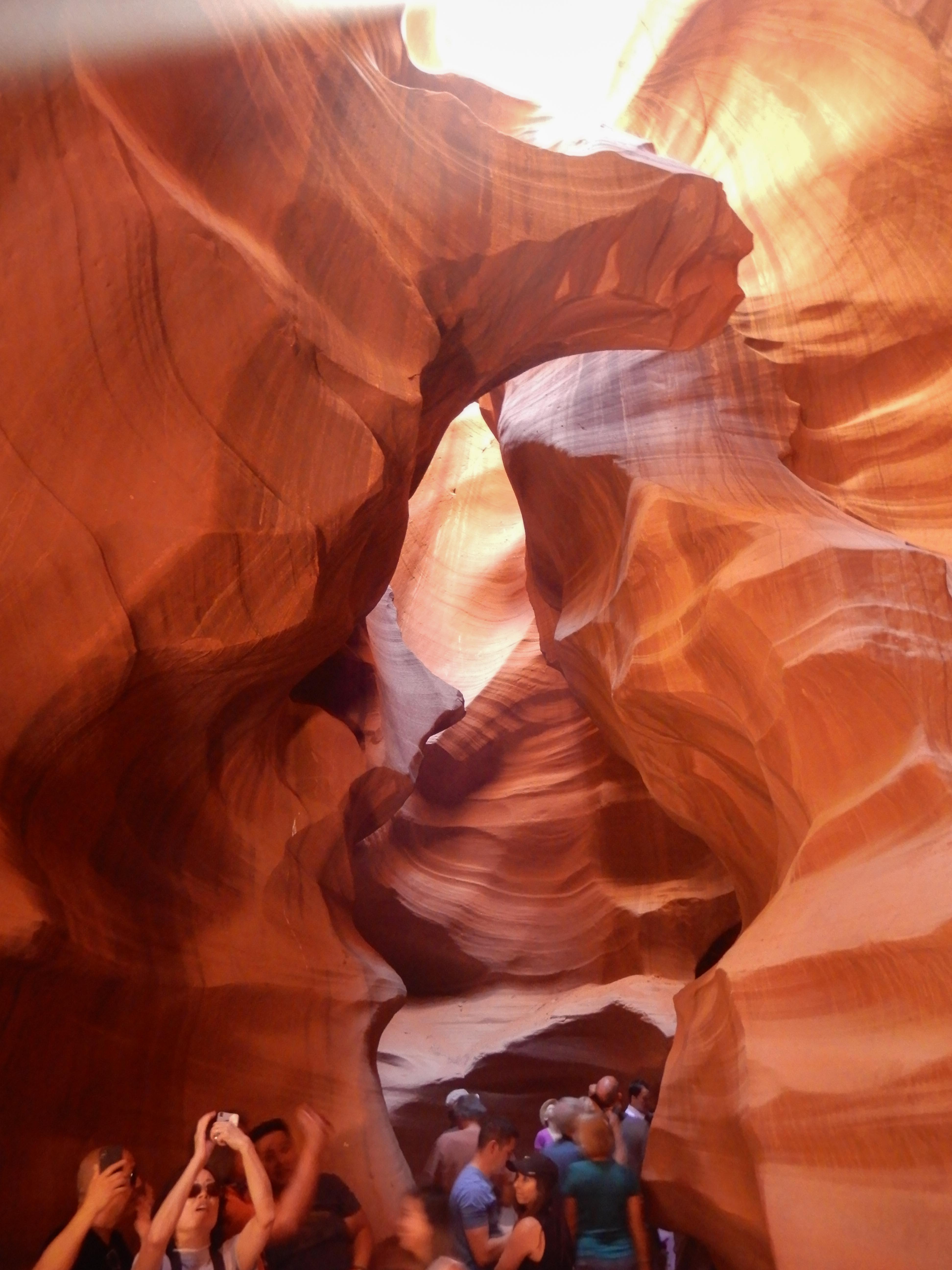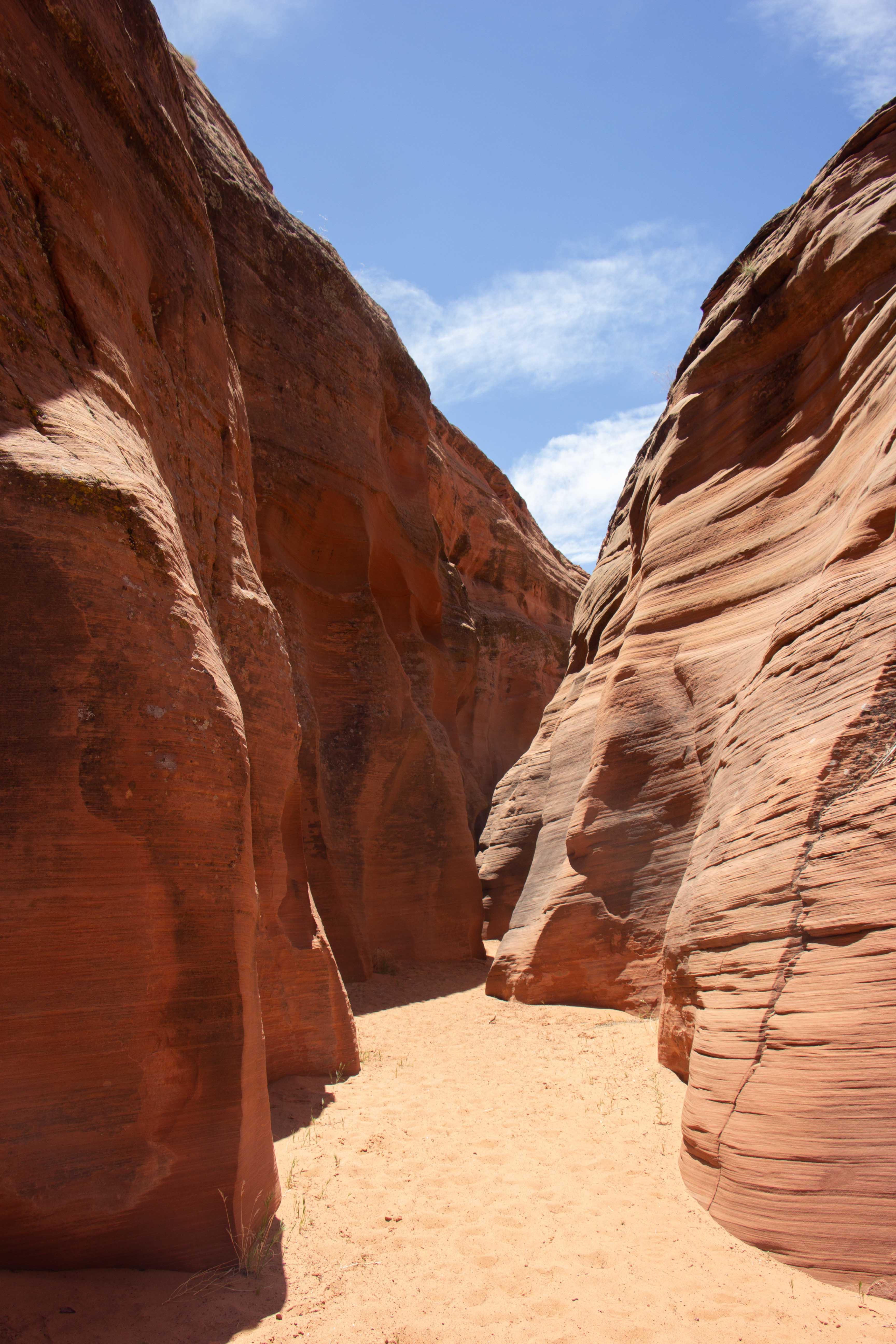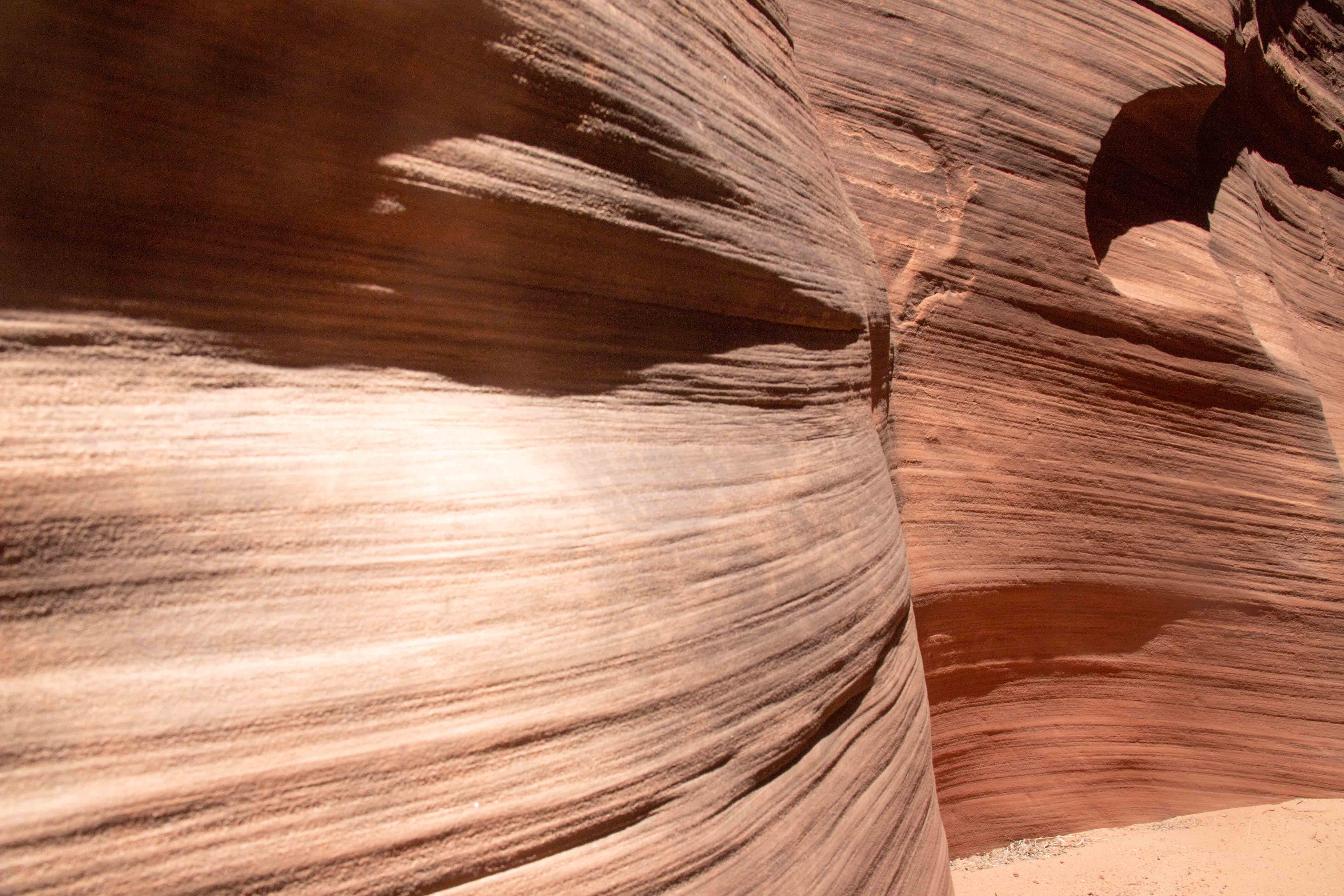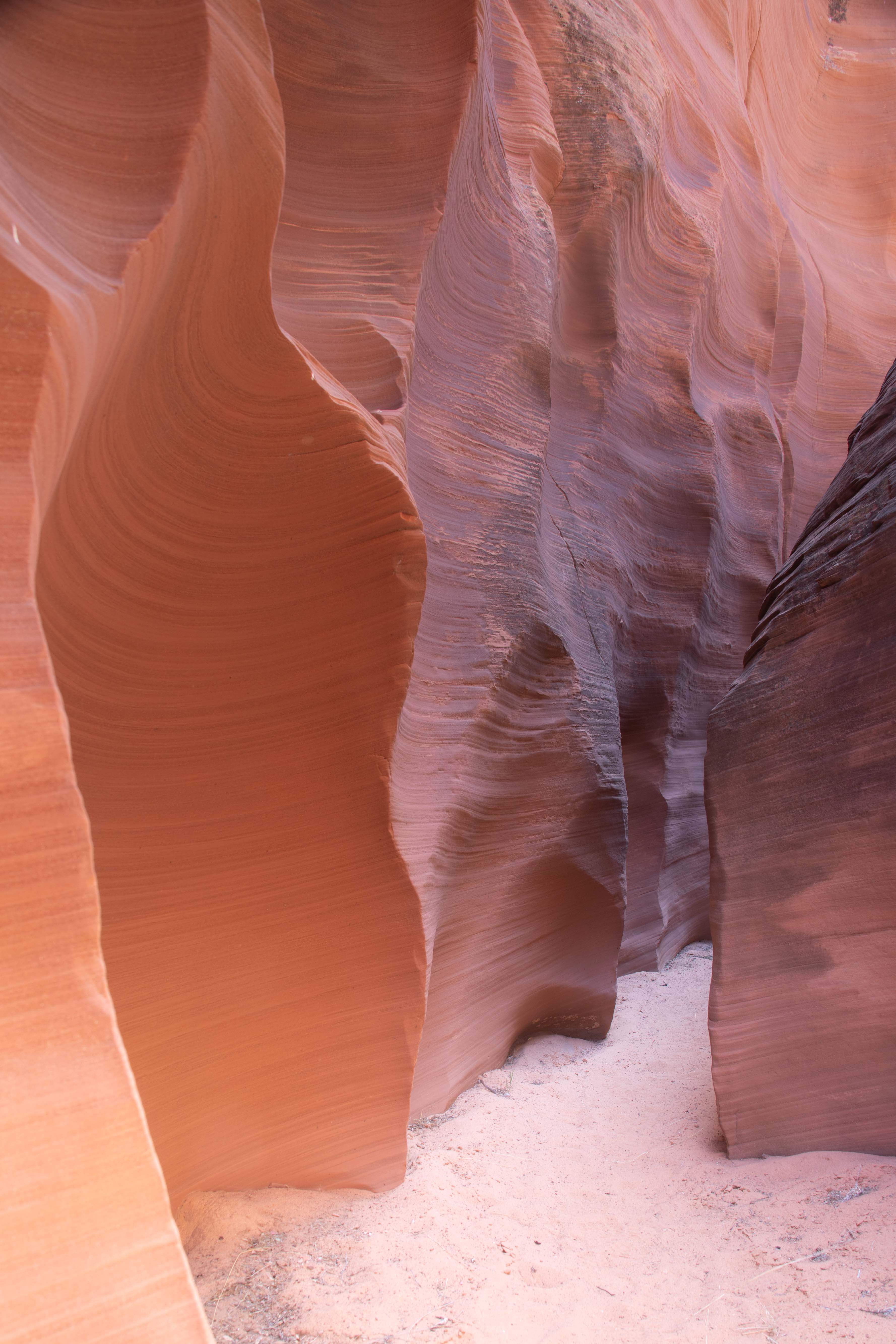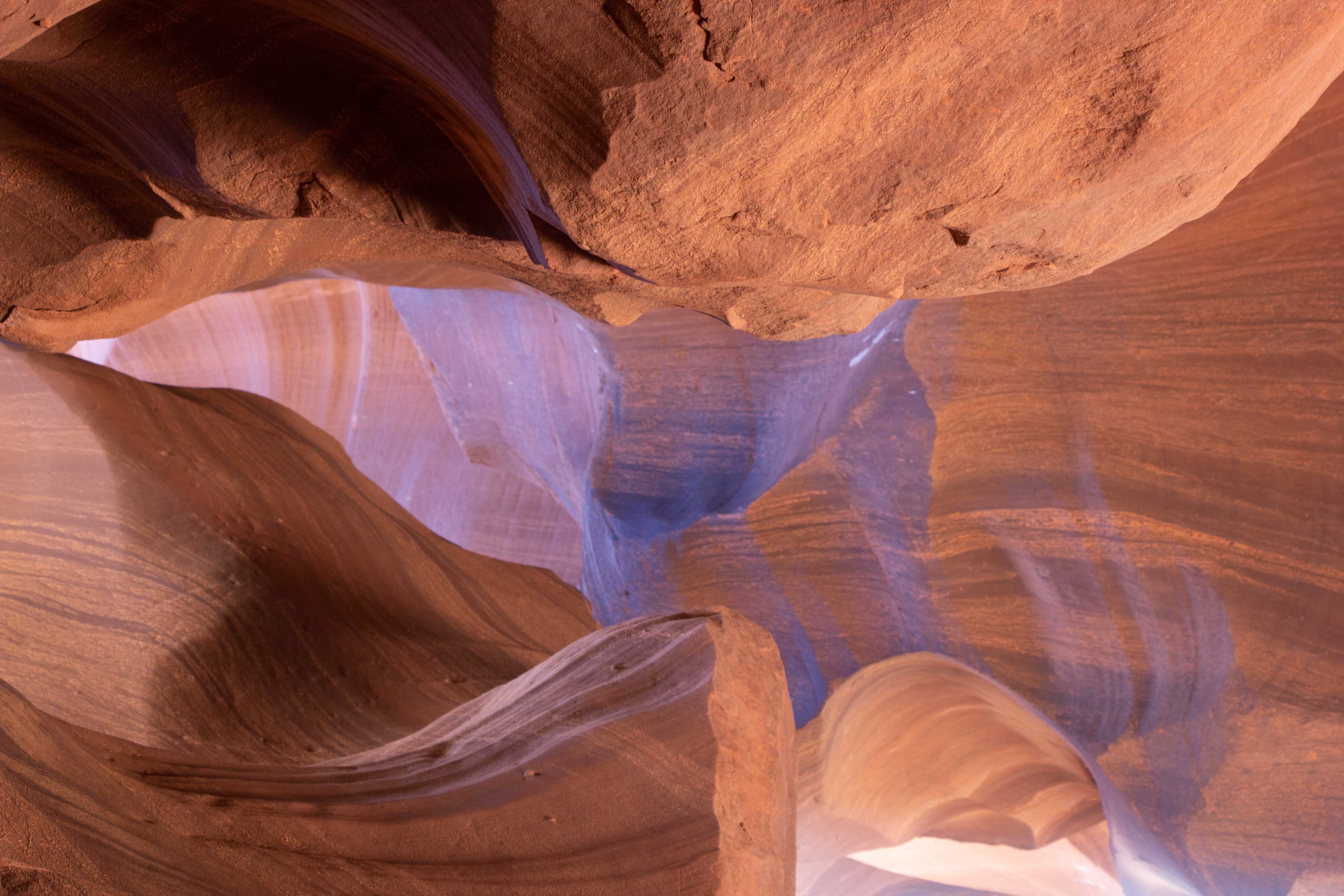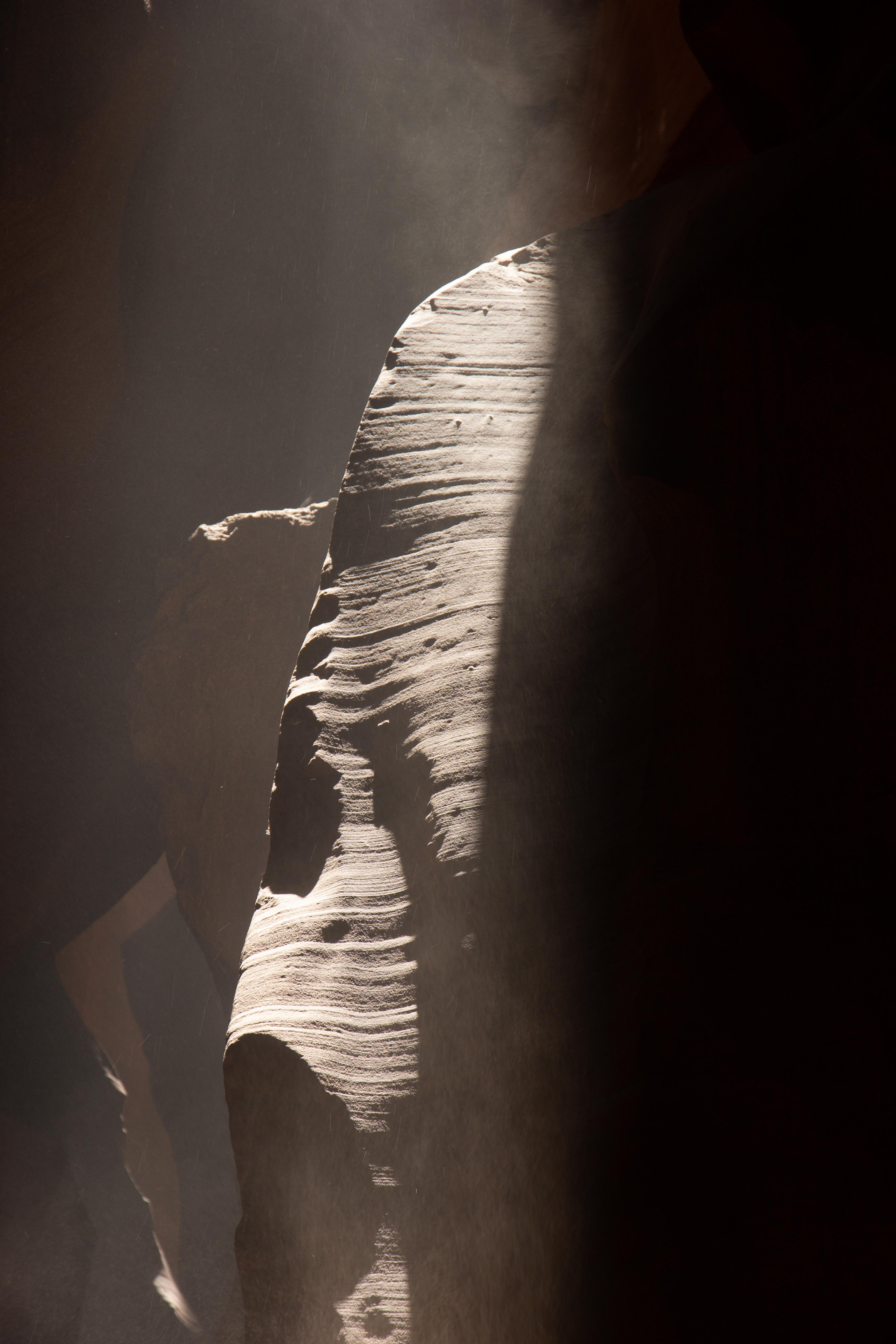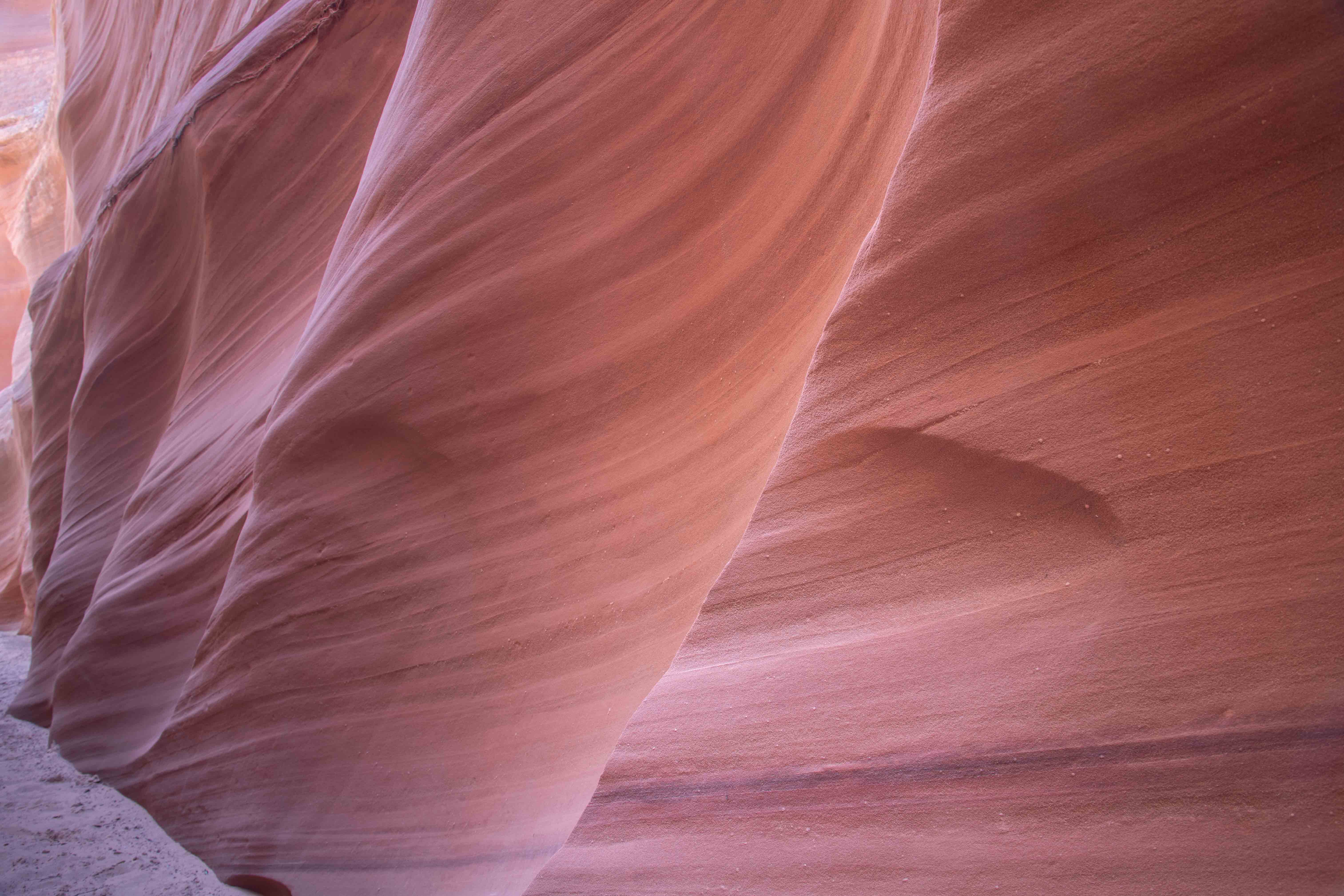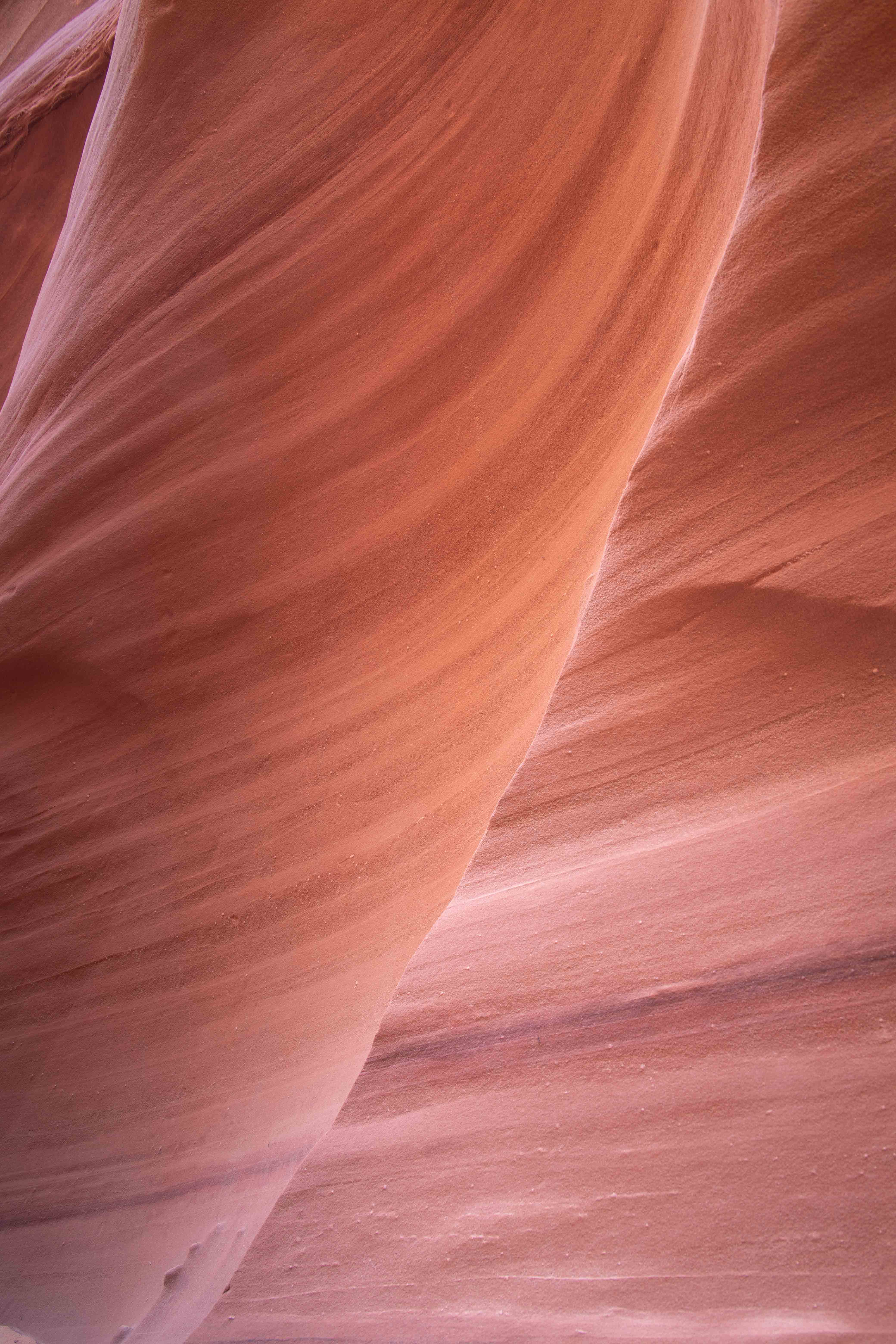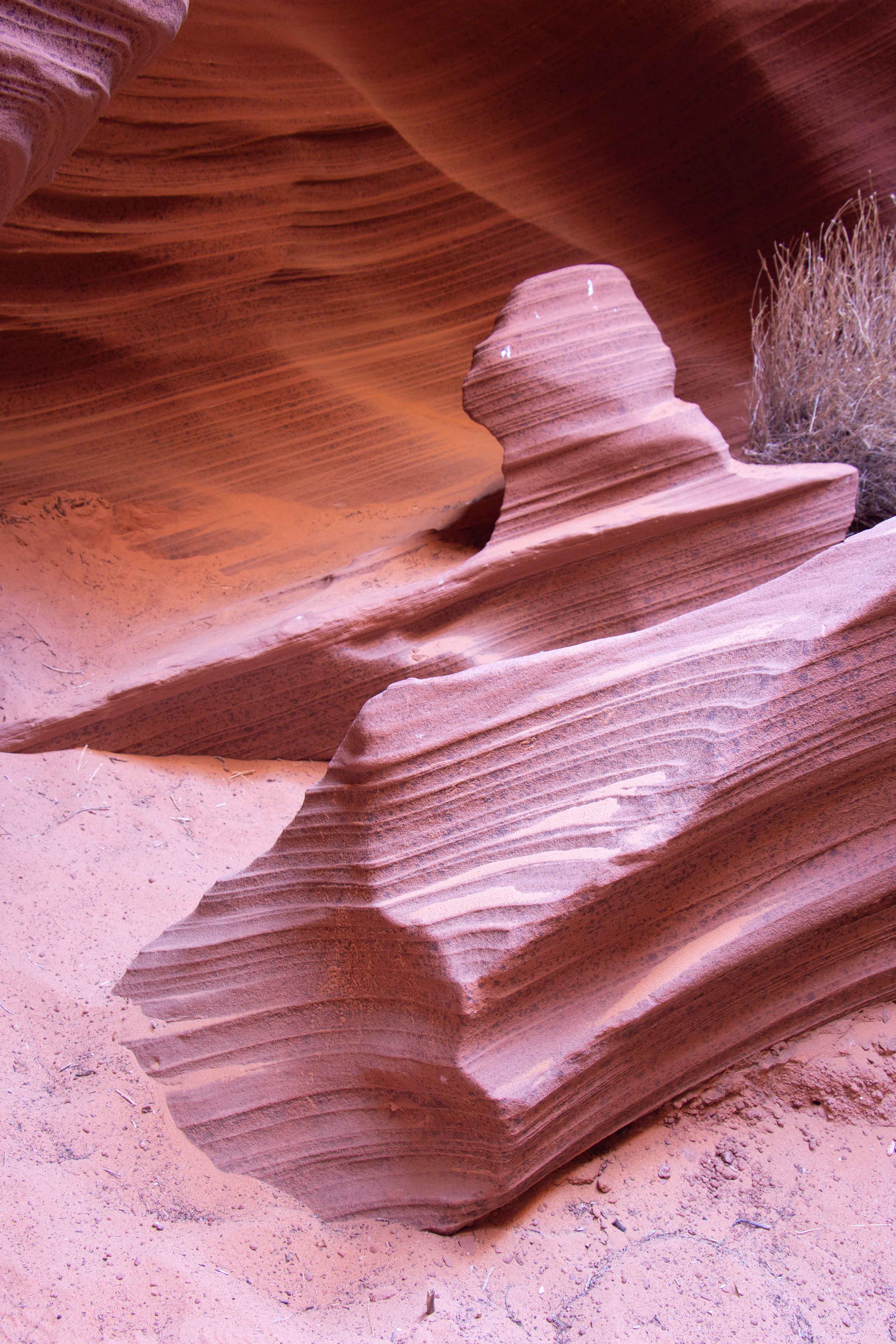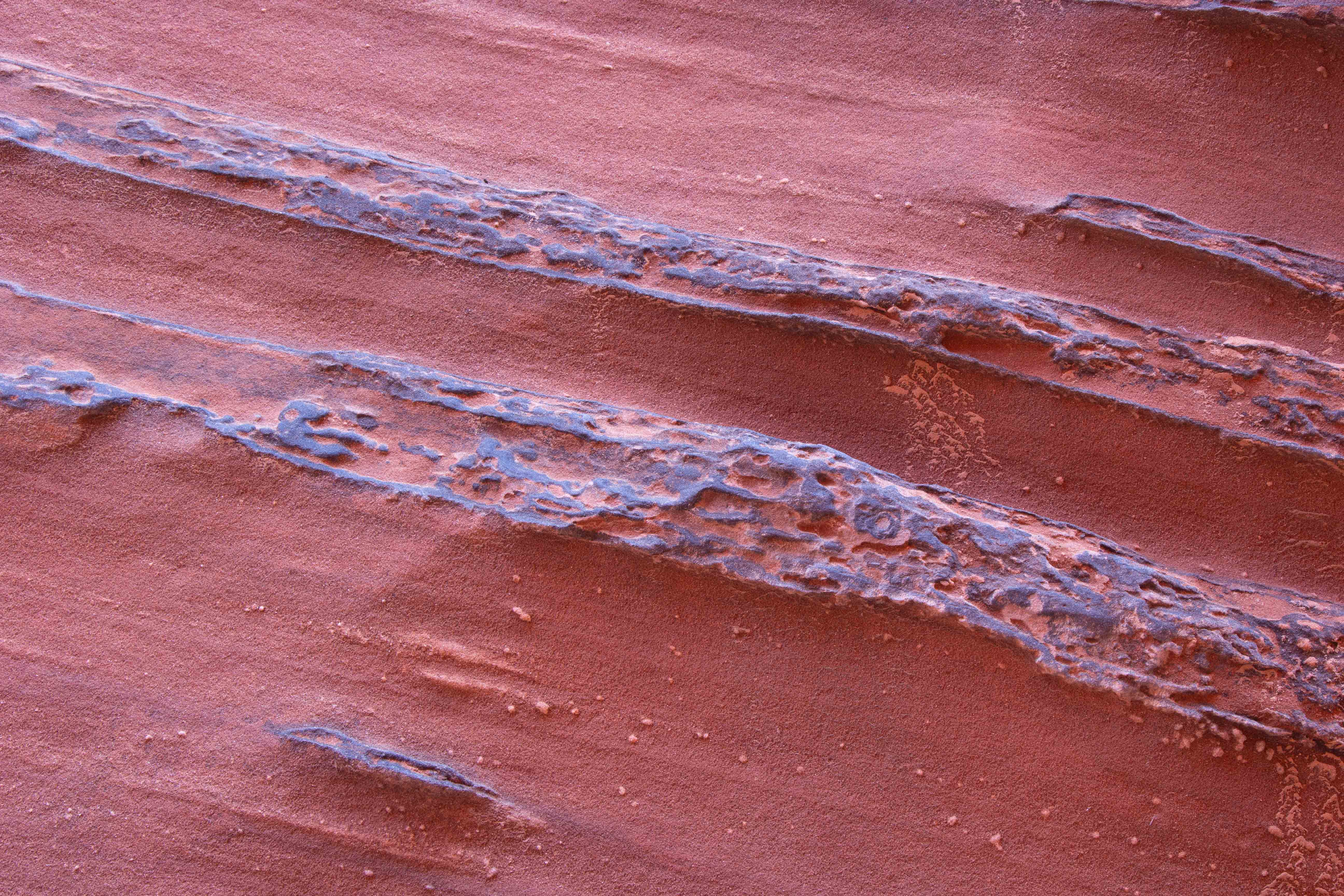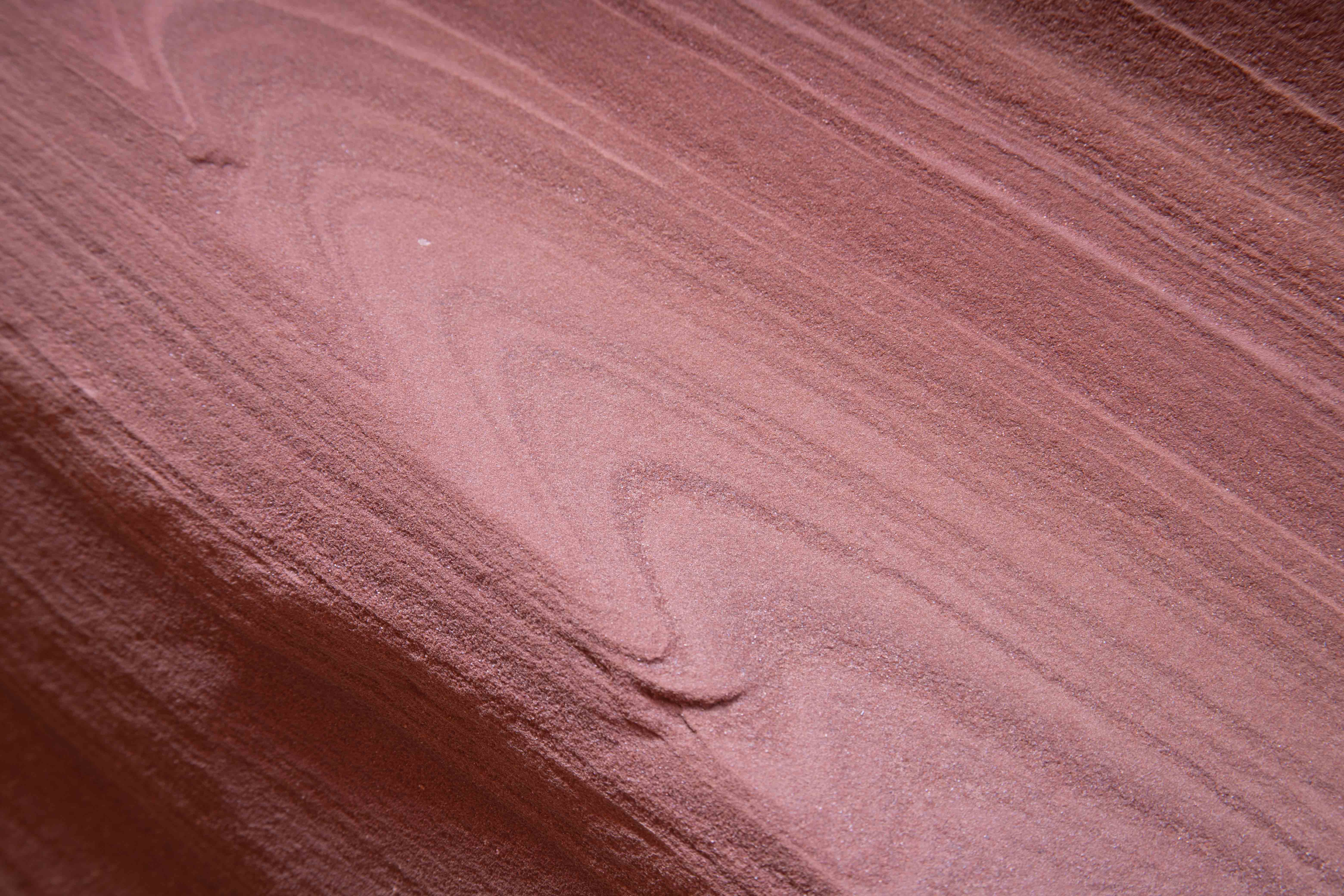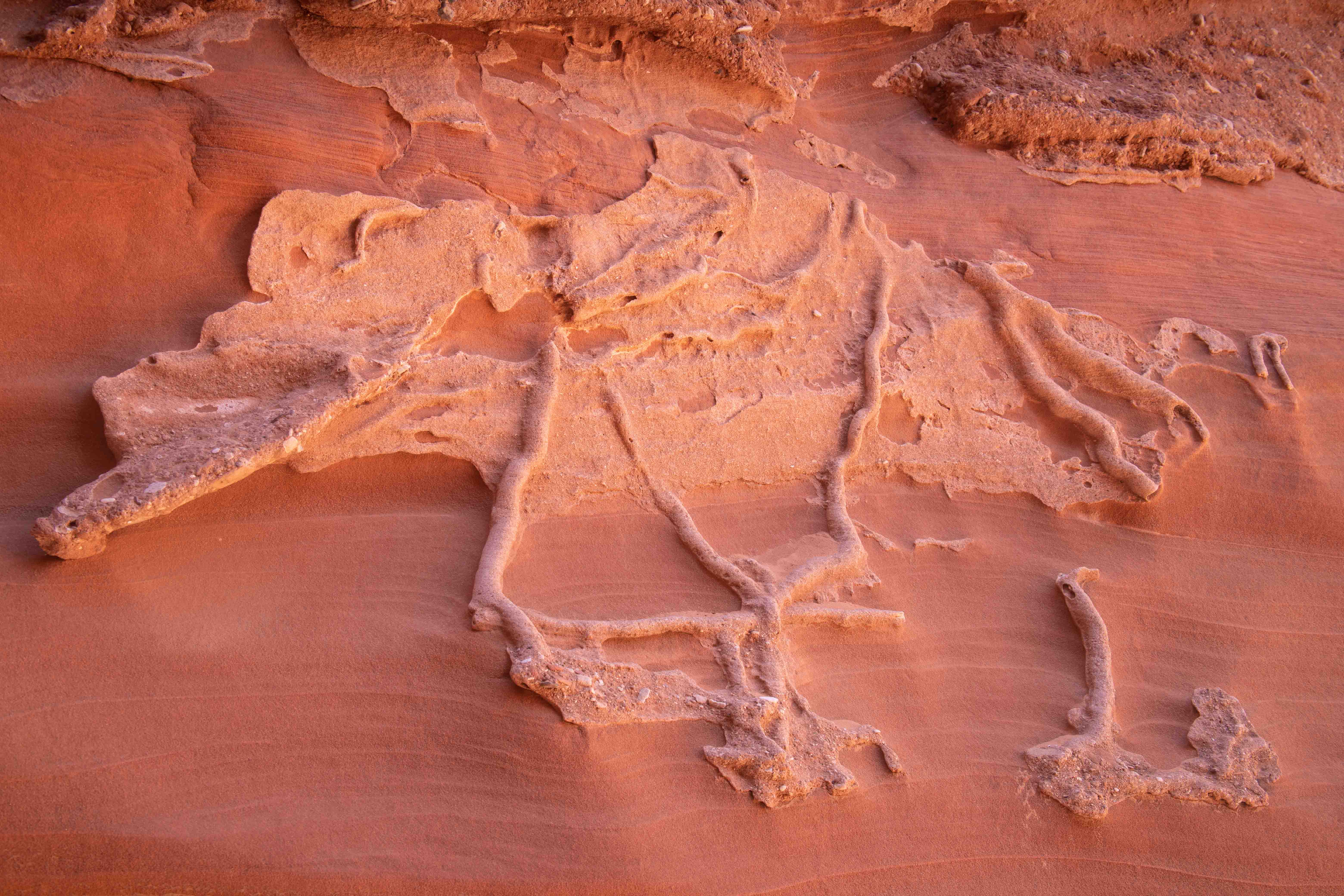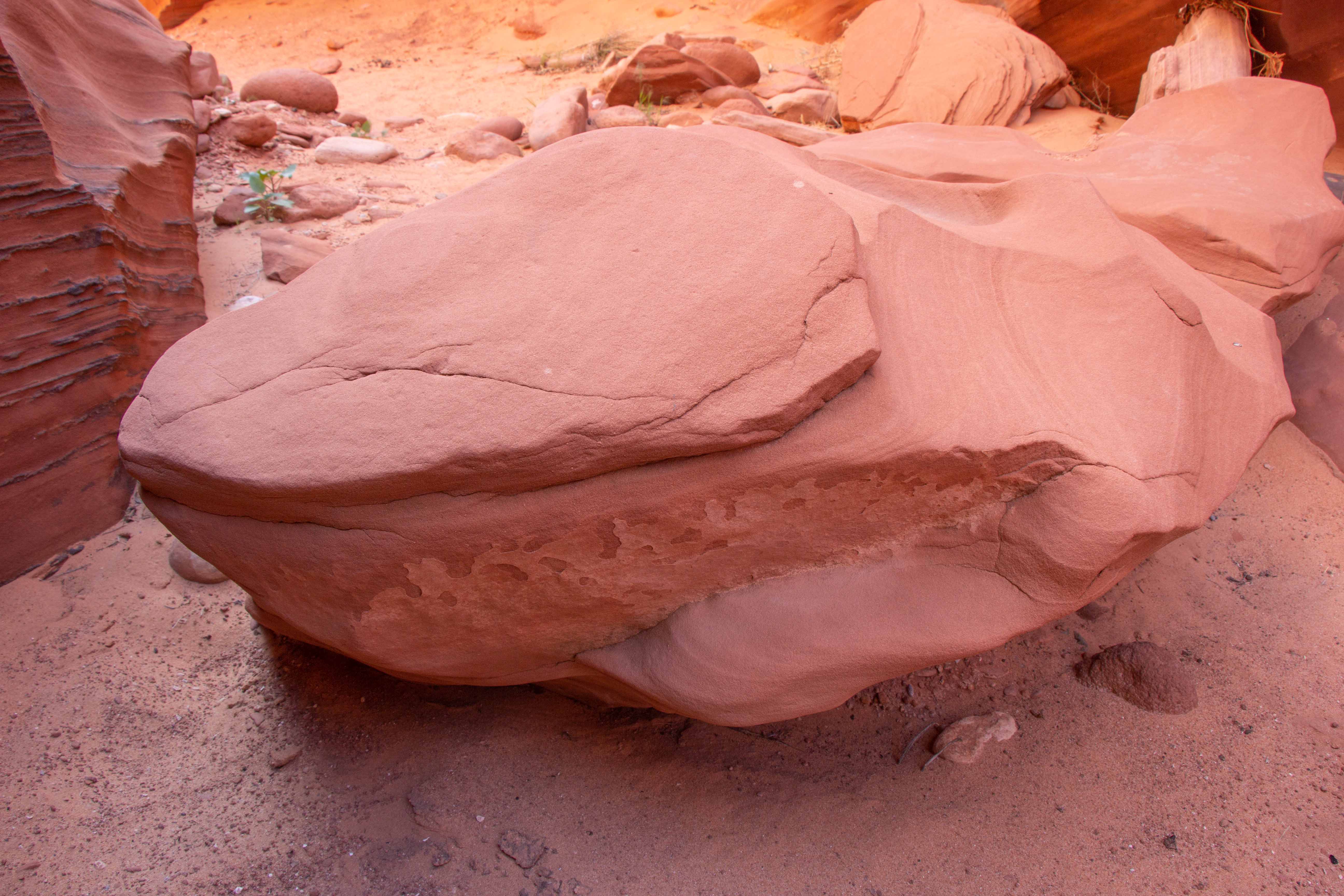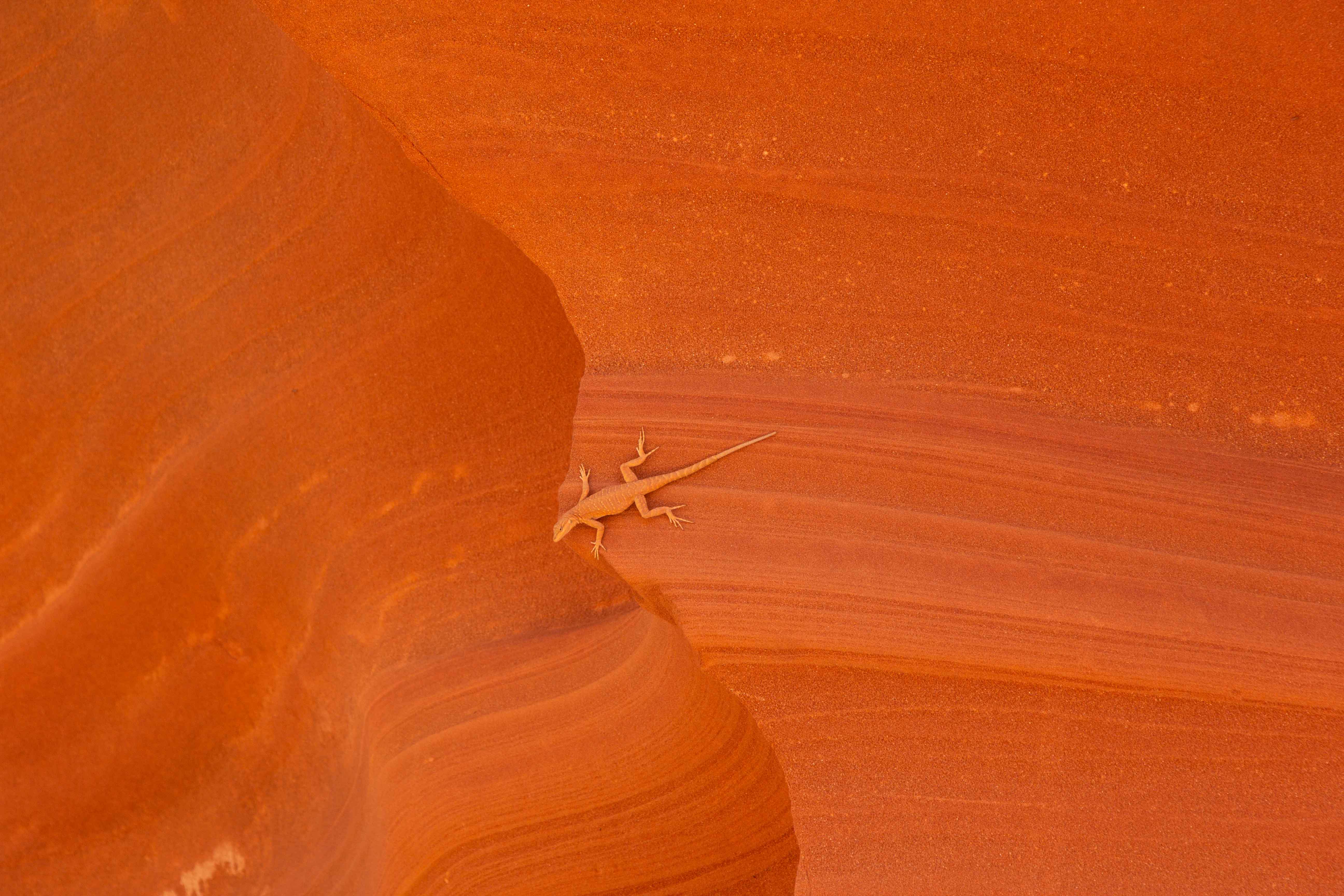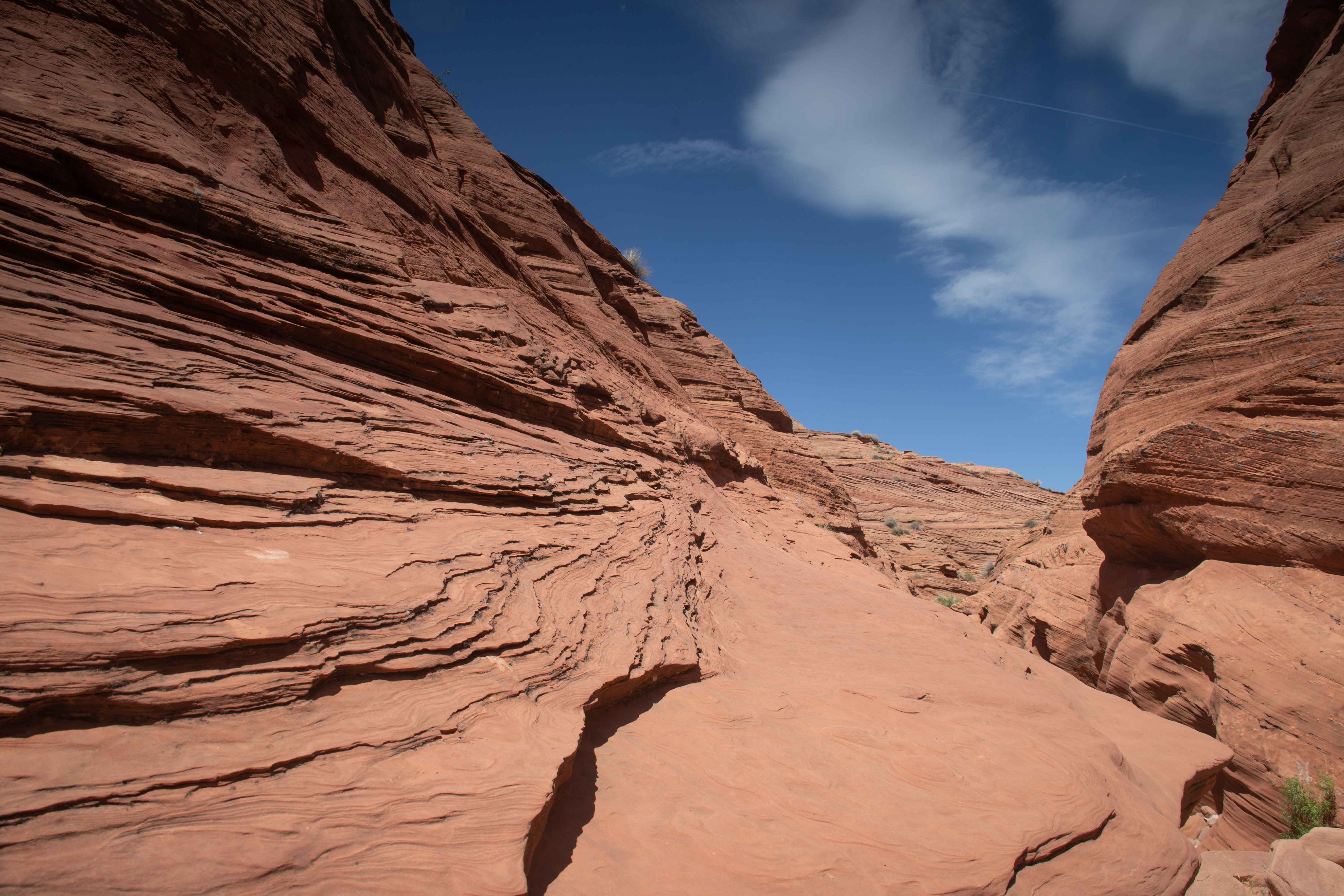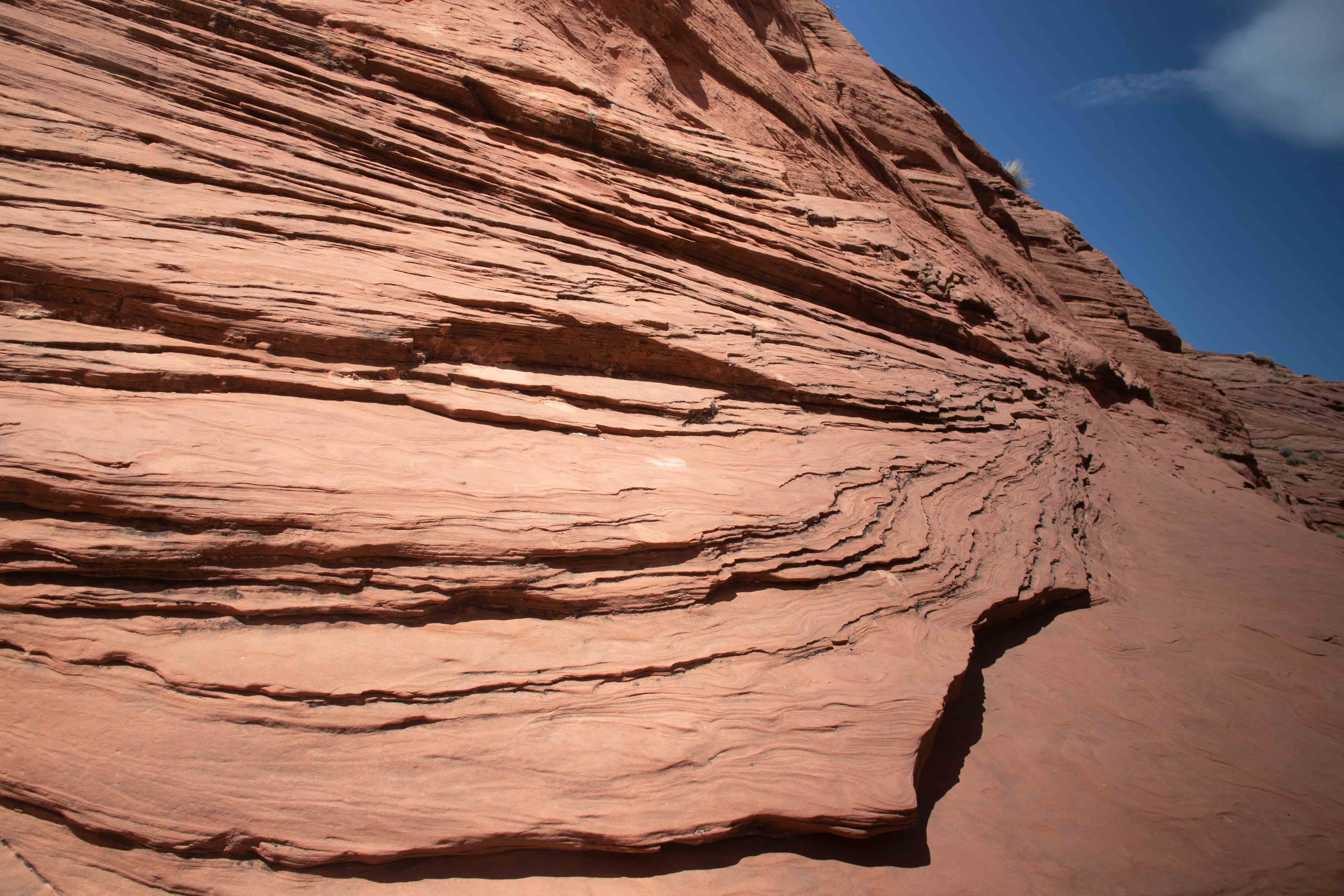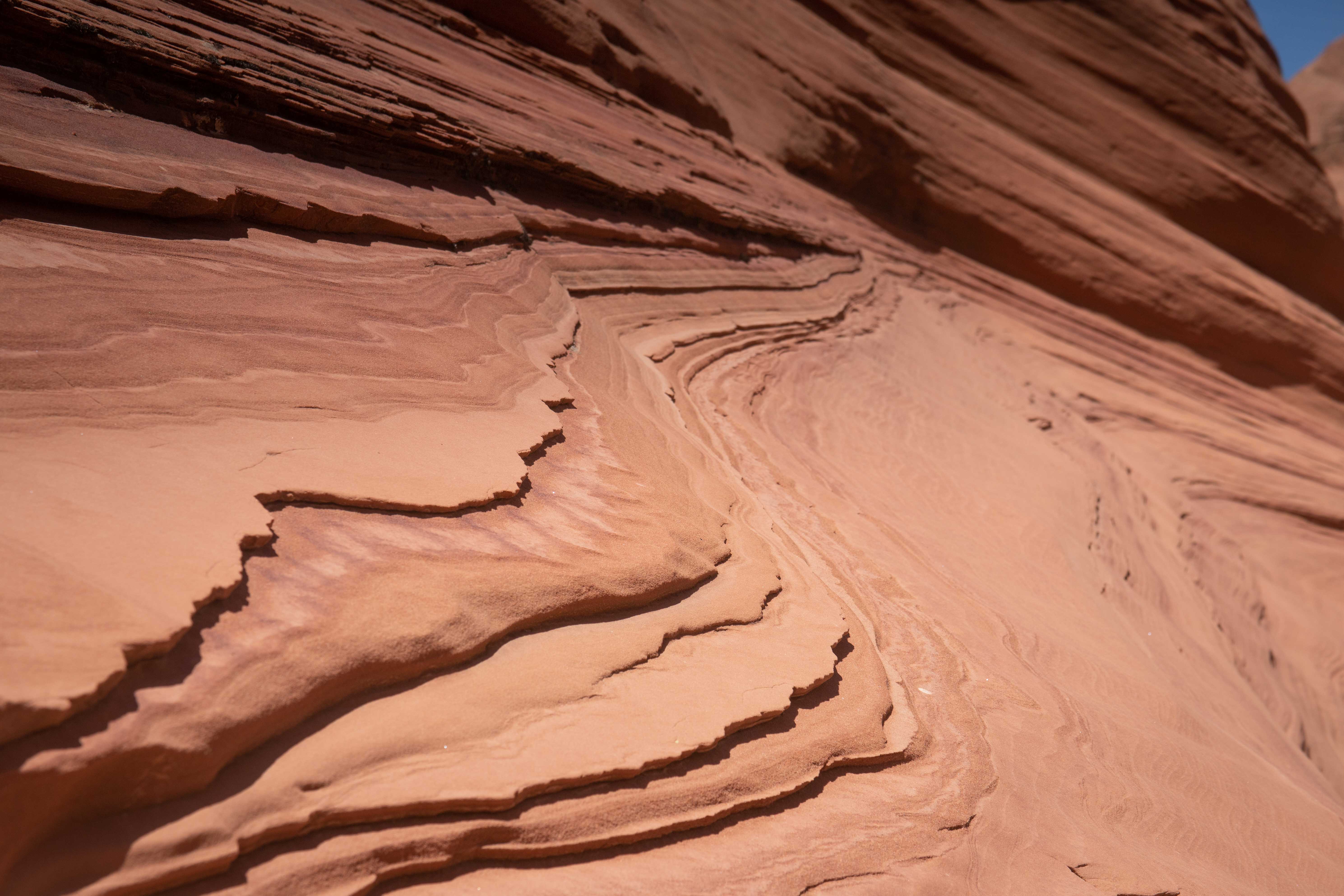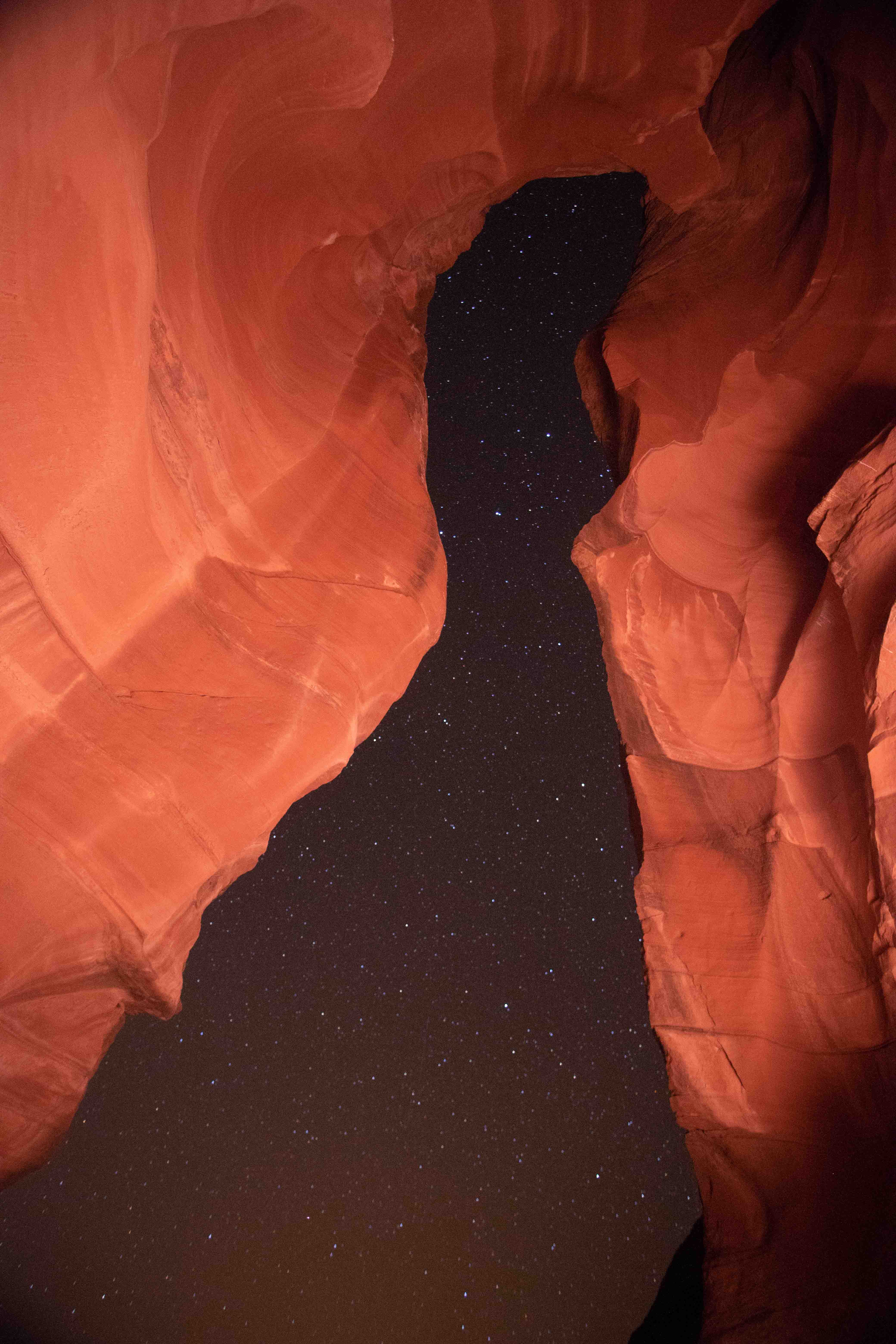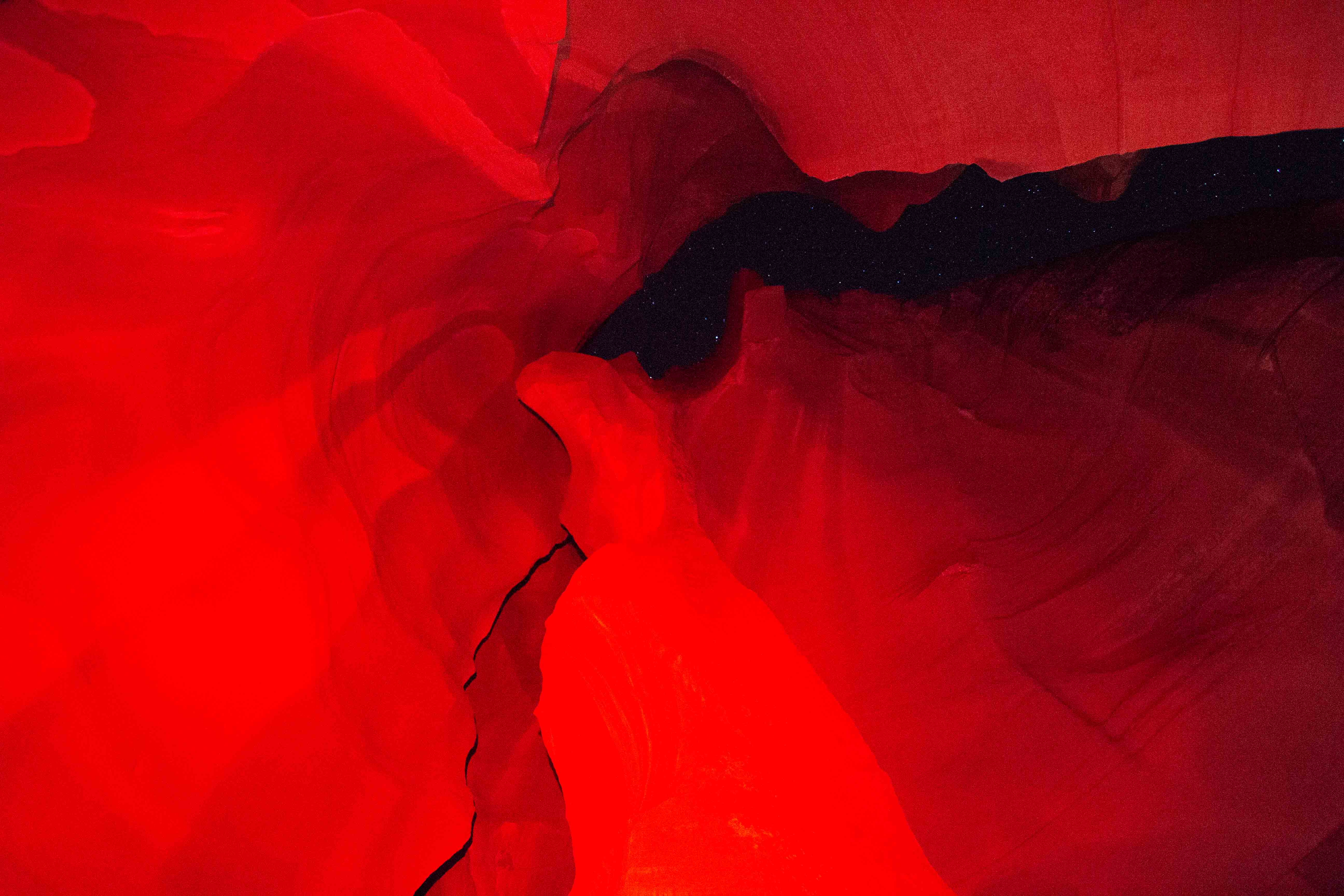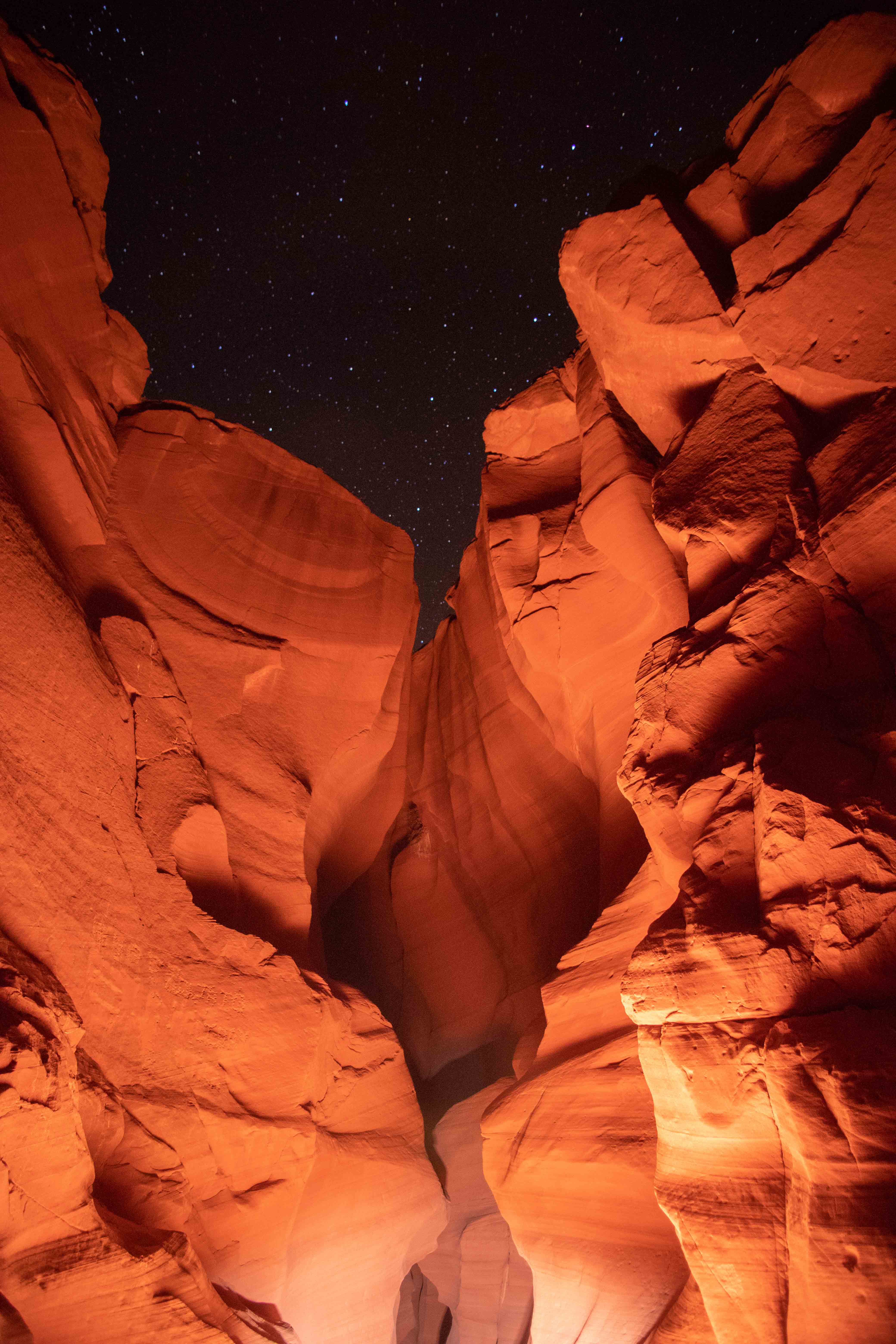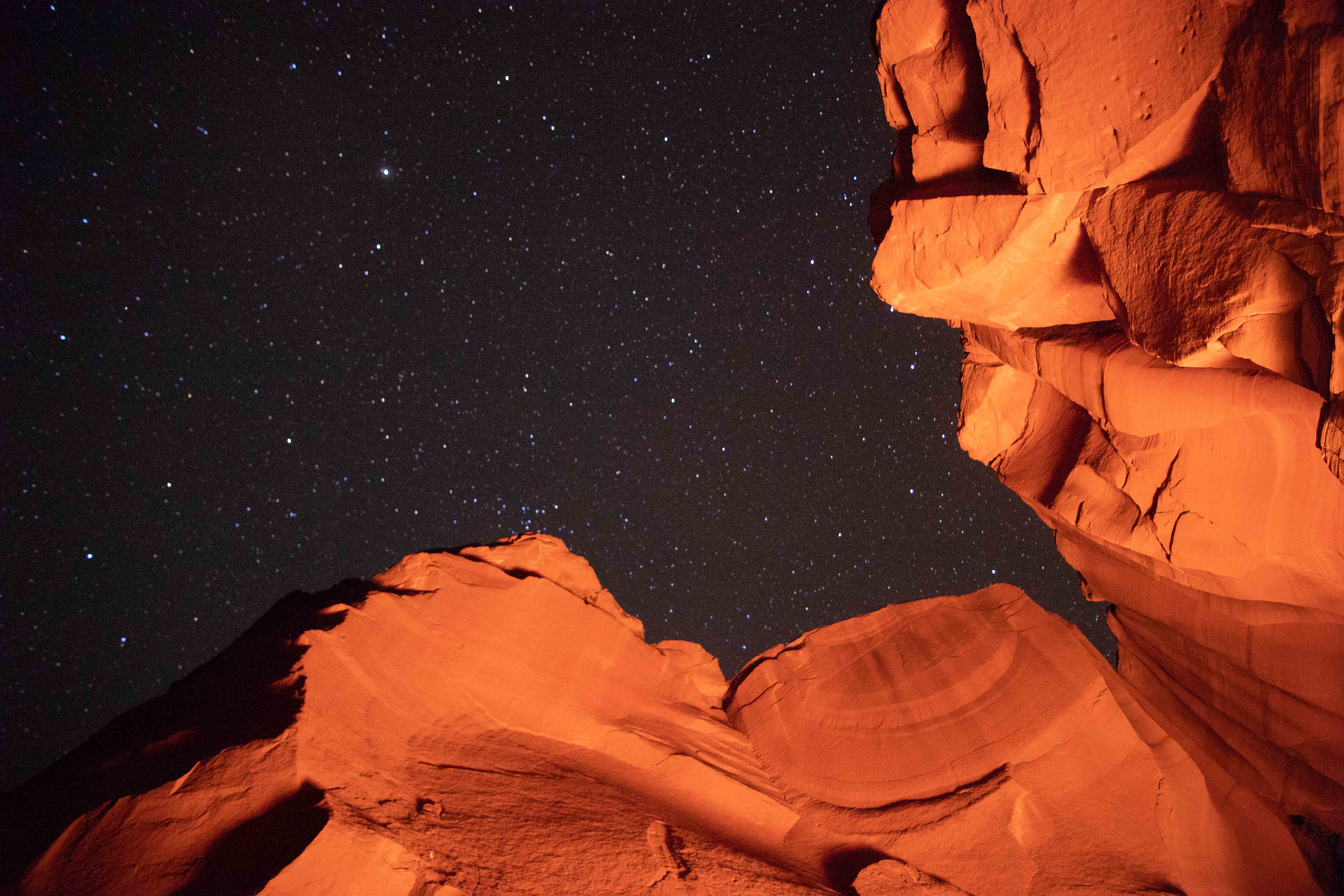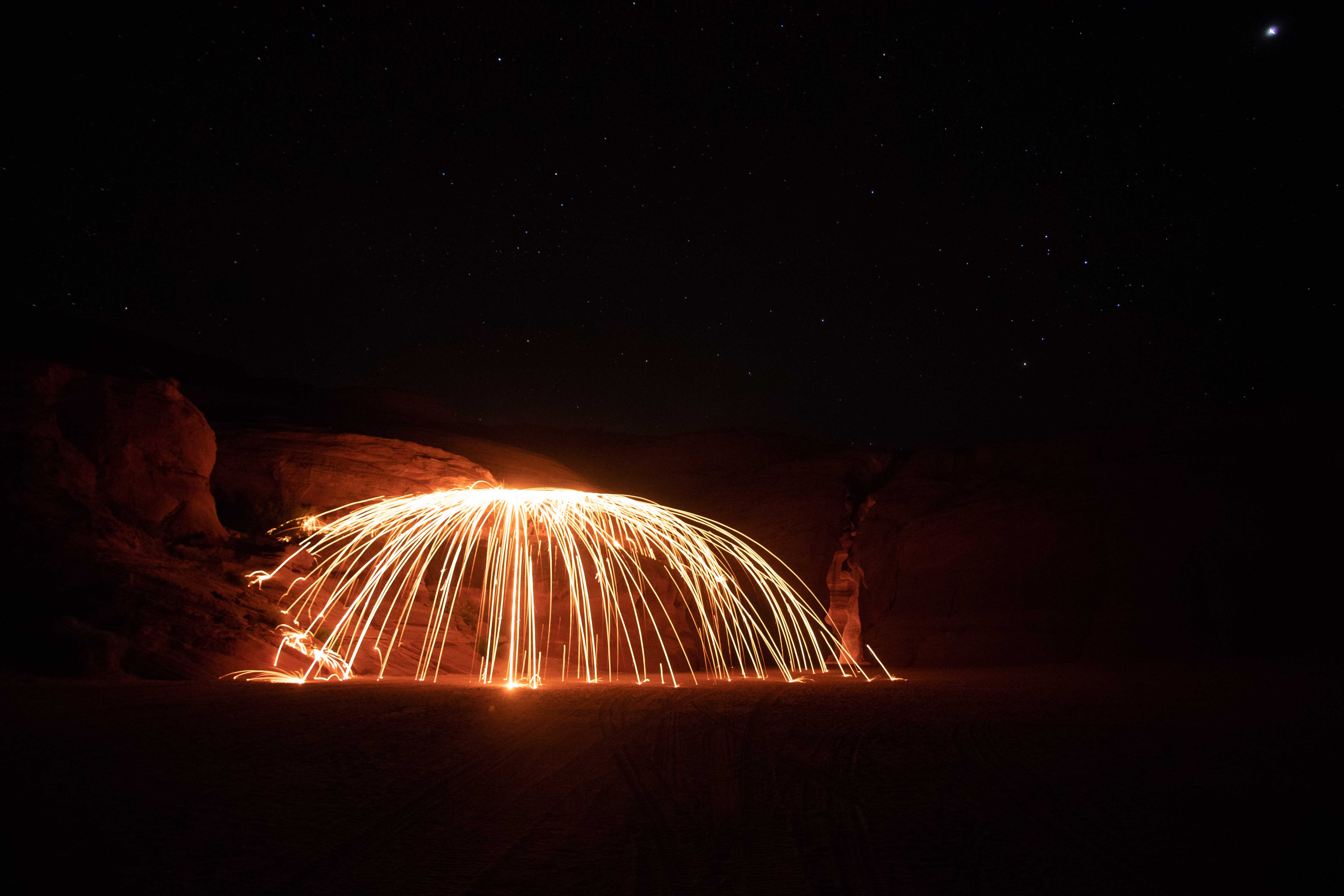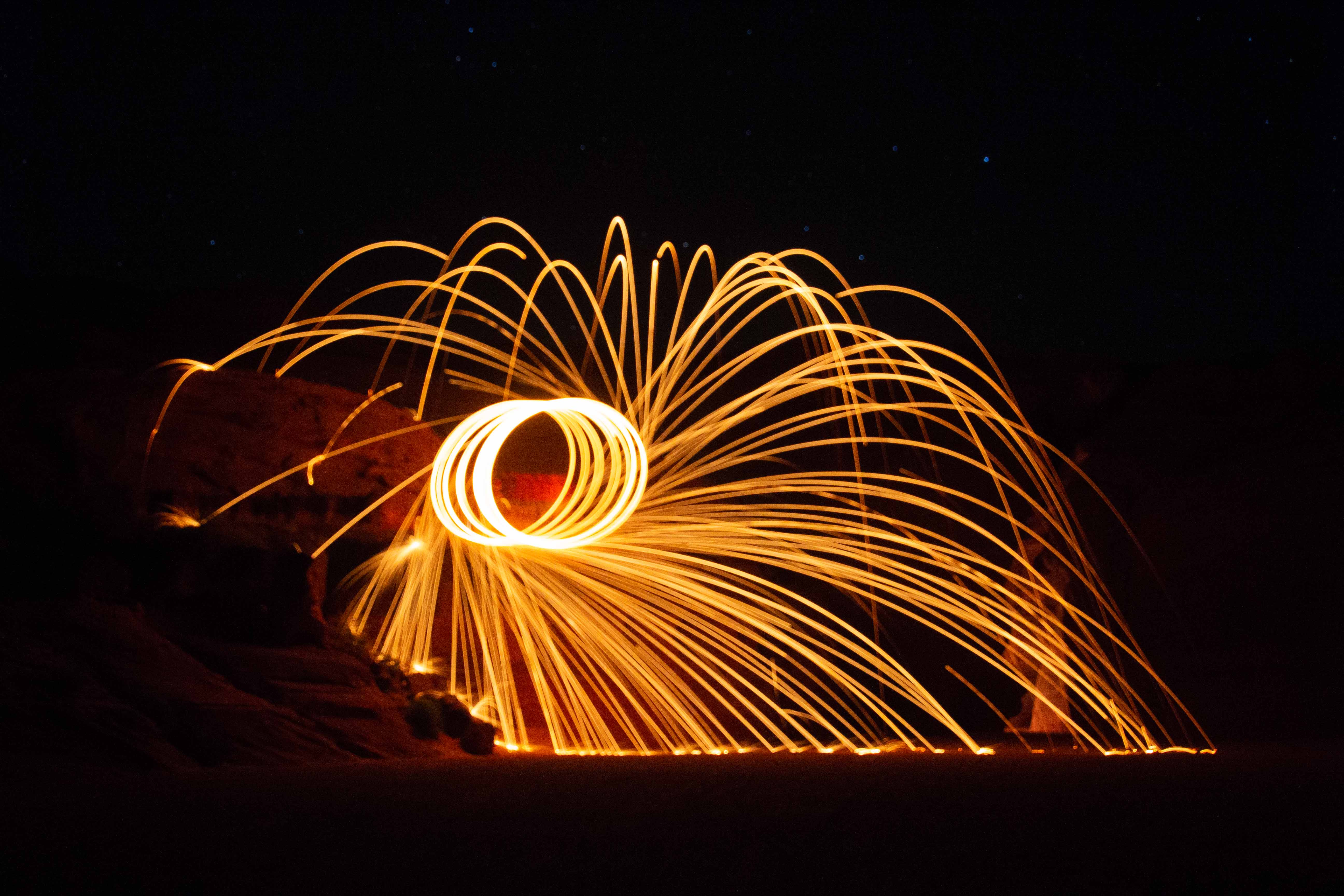Antelope Canyon
10 May, 2018
Night shot from Upper Antelope Canyon.
Antelope Canyon is the only place we are visiting in the Colorado Plateau that is not a public park. It is on Dine (Navajo) Land, and can be visited on private tours. There are tours for photographers and non-photographers; photo tours require an SLR and a tripod, no non-photographers allowed. Our Navajo guide was lots of fun, driving the Escalade over the sand dunes for great fun. This page has a lot of pictures, because our day was absolutely enthralling.
Owl Canyon
Eric's shot of Owl Canyon.
Owl Canyon.
Eric's pocket camera had a longer telephoto and got the best picture of the Great Horned Owl
Rattlesnake Canyon
Eric's shot walking into Rattlesnake Canyon. This canyon was our favorite.
Eric's shot along the floor of Rattlesnake Canyon.
Eric's camera saw more of these purple colors than mine did.
Looking deep into Rattlesnake Canyon.
Feature in Rattlesnake Canyon.
Beautiful canyon walls.
Curved walls carved by wind and water erosion.
Textured walls.
Canyon narrows.
The wind and water make such odd patterns.
Looking closely in at that last feature.
Eric picked up the beautiful purple lines in this rock.
Curving canyon features.
Stripes in the wall.
Other wall patterns.
Eric took my picture lying under a feature to photograph it.
Upper Antelope Canyon
Antelope Canyon was a mob scene, an entirely different experience from the previous canyons. Our guide told us it was no one's favorite. Make sure you do your tour with Navajo Antelope Canyon. We were in an Excursion, with seat belts, while other people were riding in vehicles like this. Photo by Eric.
Eric took a picture of the crowds waiting to get into the canyon.
The guides would hold up foot traffic periodically for two minutes to allow photographers to take pictures. I couldn't work well under that sort of pressure, even when allowed to get set up first, but Eric did some photography.
Also Eric's work.
Eventually I started trying to shoot a little.
This is the shot everyone comes to Antelope Canyon to take--the sun shining down into the canyon. The week we were here was the first week of the year for this phenomenon to occur.
Eric took a picture of the crowds trying to get the shot. The Navajo guides were busy shoveling sand into the beam, since apparently it wasn't interesting enough for some photographers without that. It seemed kind of contrived to us.
This was where the guides tried to start helping me carry my tripod. They were astonished at its 3.4-kg/7.5-lb weight, and passing it around. It was given to me free by a friend who found it too heavy, even though he mostly does urban photography. It's study. I definitely prefer it to the flimsy 1.1kg/2.5-lb tripod I've been carrying on trails.
Sheep Mountain Canyon
We were relieved to head for Sheep Mountain Canyon. Our guide promised us there would be hardly anyone else there. We did run into a couple we had met that morning, who had thought they had signed up for the same tour we had, but had made a mistake somewhere. It's easy to make mistakes on the non-intuitive web site. Even seriously organized I accidentally failed to book the night shoot, although I did discover the problem a few weeks out, in time to reserve it.
Eric took a picture entering lovely, peaceful Sheep Mountain Canyon.
I loved the curves of the walls.
Again, Eric's camera saw more of the purples I was seeing with my eyes but not my camera.
Photo by Eric.
Curves in the walls.
Curve detail.
Eric took a picture of this super cool shape. It makes me think of the Sphynx.
Eric's camera captured more purples.
Swirls like this were everywhere in the rock. It was very difficult to decide what to take a picture of next!
Incredibly weird erosion. It looks like an animal.
Eric was fascinated by this rock.
Eric found a lizard. Our guide liked to try to catch them.
Looking toward the canyon entrance along an awesome curve.
I was so delighted with all of my pictures of this feature that I couldn't choose which one to post.
Night Shoot at Upper Antelope Canyon
This was had a hard day--getting up before dawn to meet the four-canyon tour, then going back for a nap before going back out for the night shoot. We chose to stay in a motel in nearby Page, Arizona to facilitate this.
Mouth of Upper Antelope Canyon, now bereft of tourists and open only to those who paid for photo tour.
Eric took a picture looking up at the canyon roof.
Looking out the other end of the canyon.
The Big Dipper was right at the top of the canyon, but it's hard to see it in the photo.
Among other contrived things the Navajo guides do to make your pictures more interesting is climb up on the ledge (in the dark!) set steel wool on fire, and wave it around as it unrolls. It does make some interesting effects, but the timing is of course very tricky.
Photo by Eric.
If you visit this area, do not take the tour that just visits Upper Antelope Canyon. The Navajo are trying to figure out how better to manage the large number of visitors to their canyon. They tried raising the prices this year, and it did not seem to make a dent in the number of visitors. The other canyons, while somewhat less photographically impressive, were much nicer to visit -- and gave you some time to explore your own vision, rather than the obligatory "set pieces." Be sure to pick a multi-canyon tour! And be aware that the night tour is cash only. I messed this up and we had to drive back into town for an ATM.
Also, if you're doing any commercial photography, be sure to pay the Navajo for a photo permit. It's their canyon, and it's the right thing to do.
At the conclusion of our wonderful day, Eric said to our guide, "I feel weird, under the circumstances, handing you engravings of Andrew Jackson, but..." Time to change the US$20, already, huh?
On to Glen Canyon National Recreation Area and Vermilion Cliffs National Monument.
